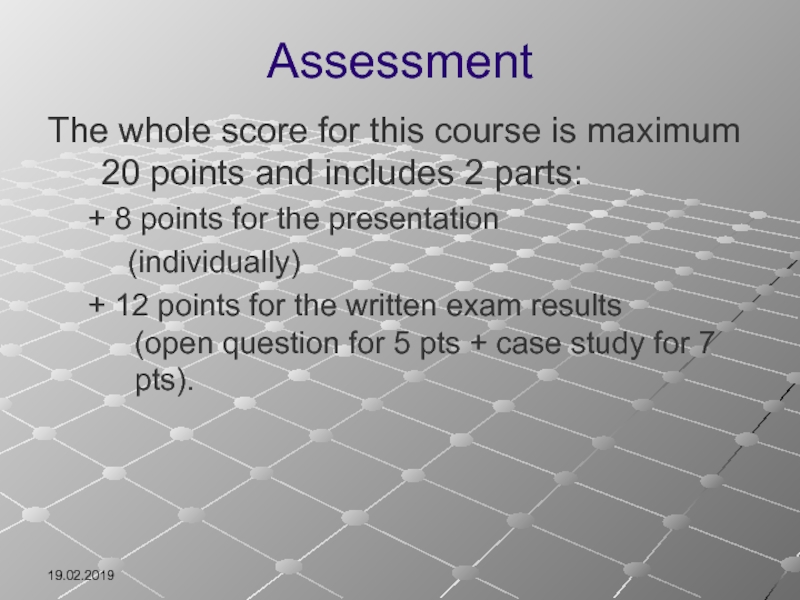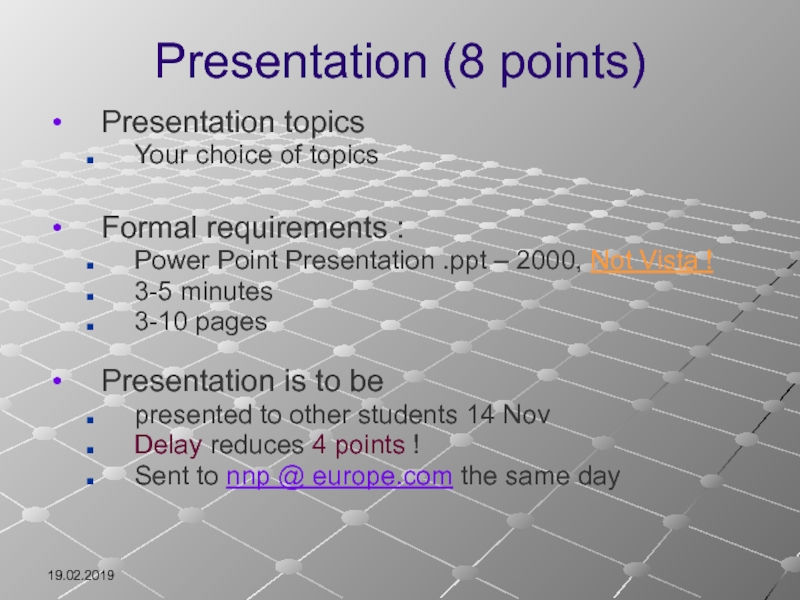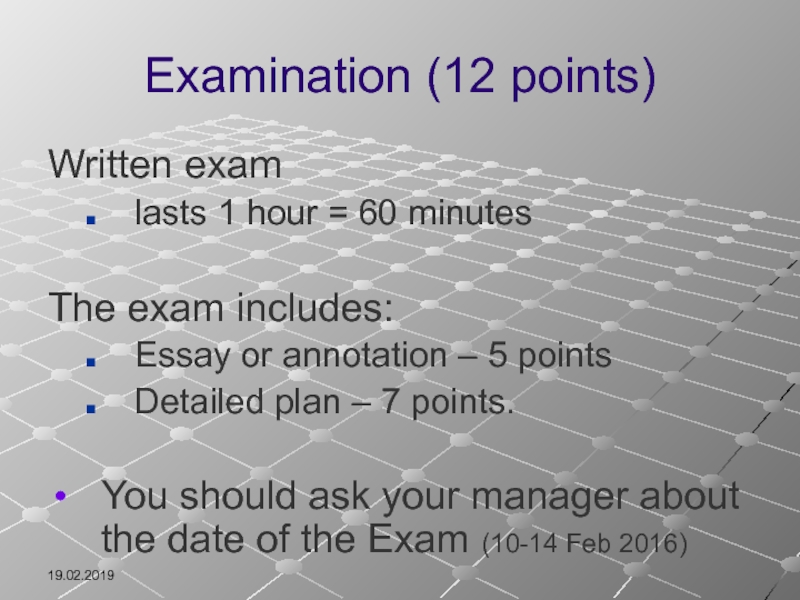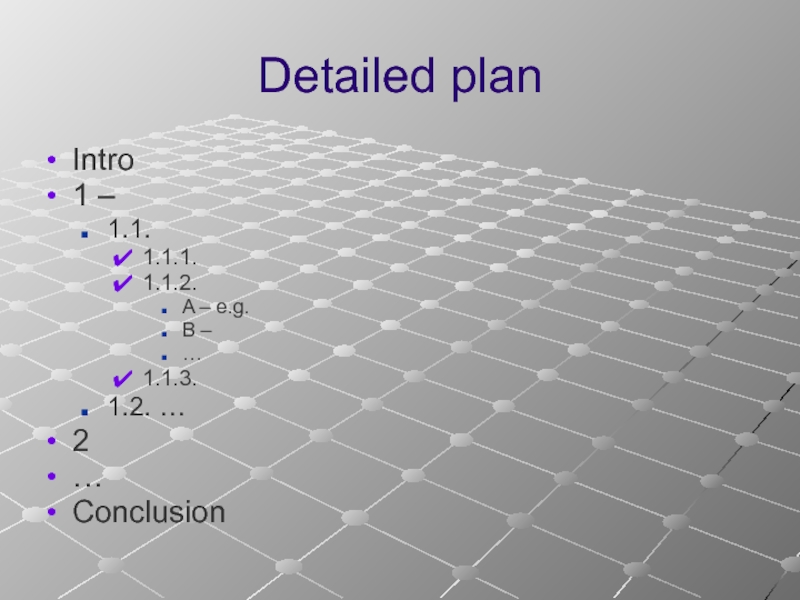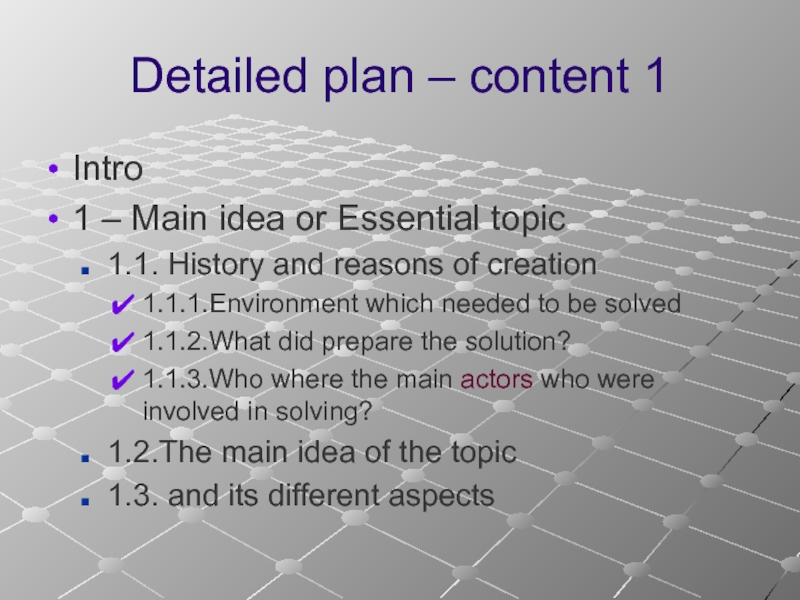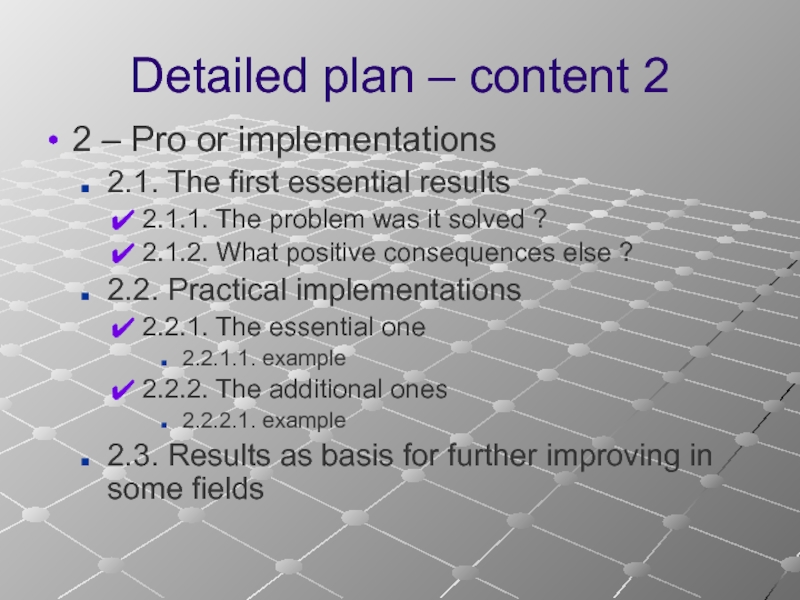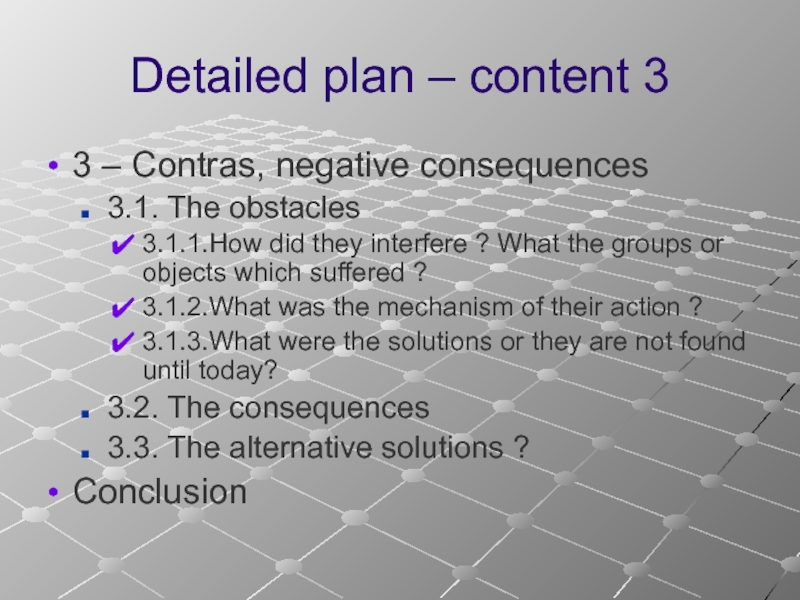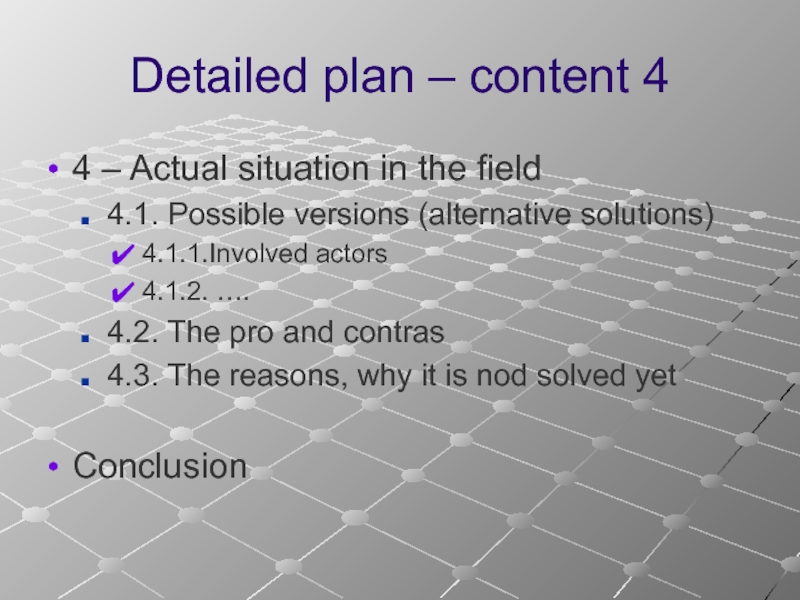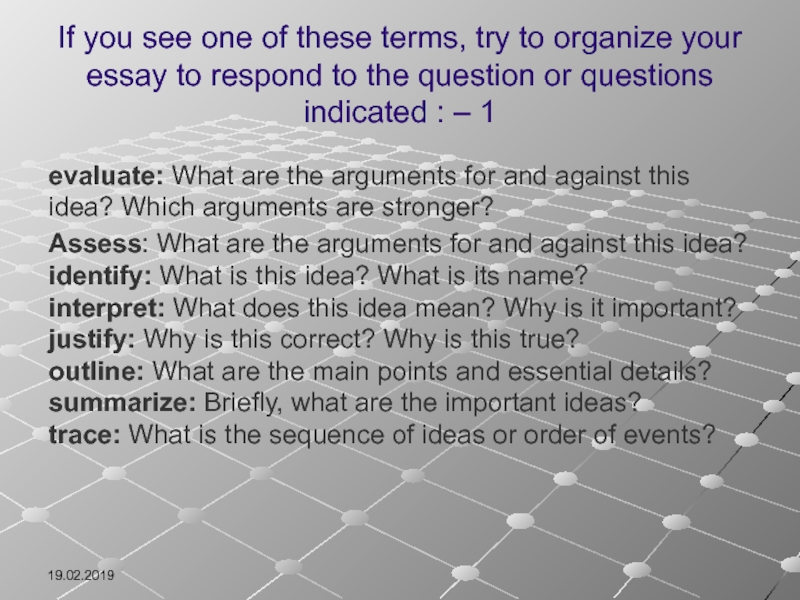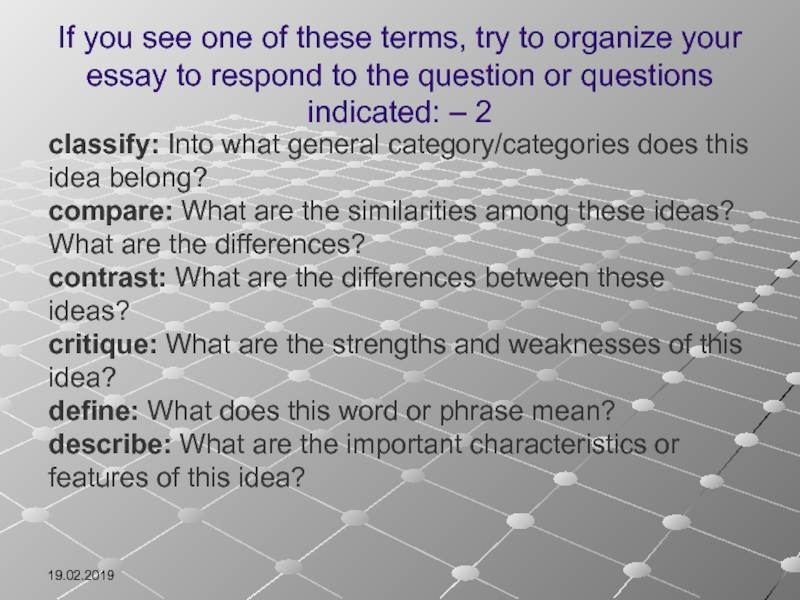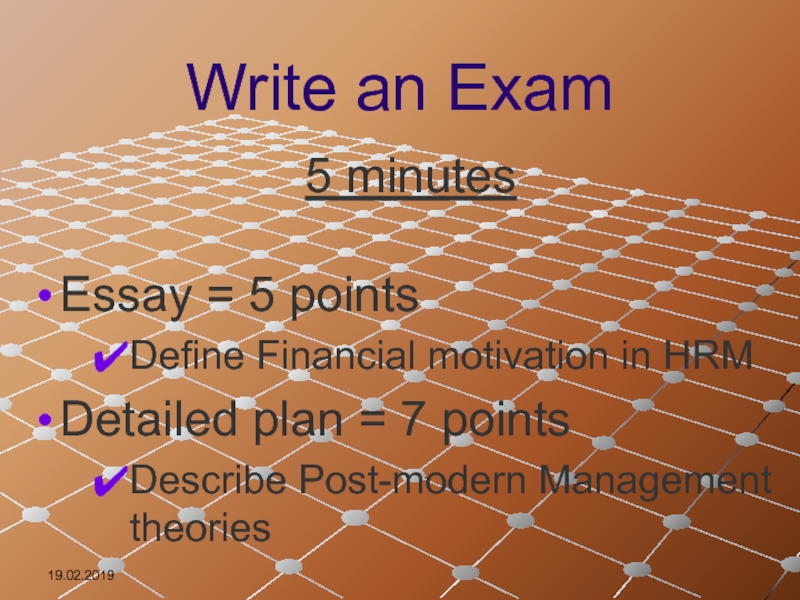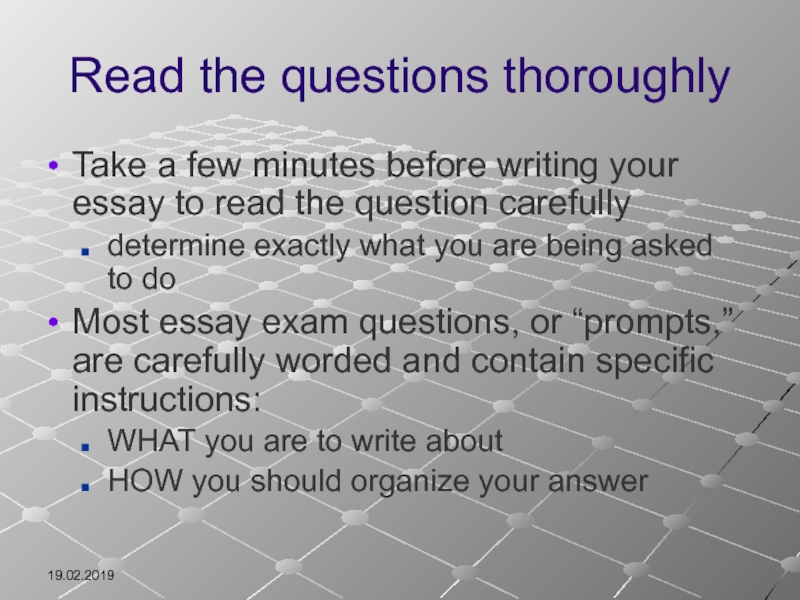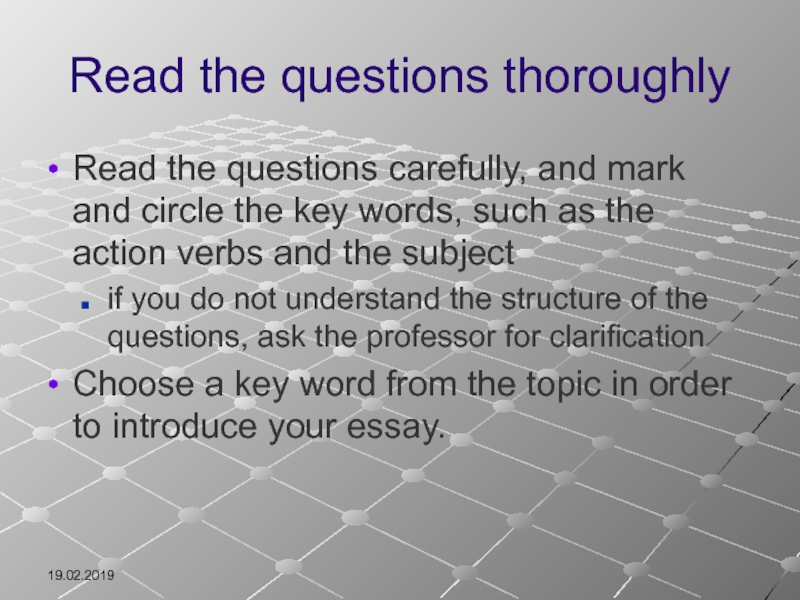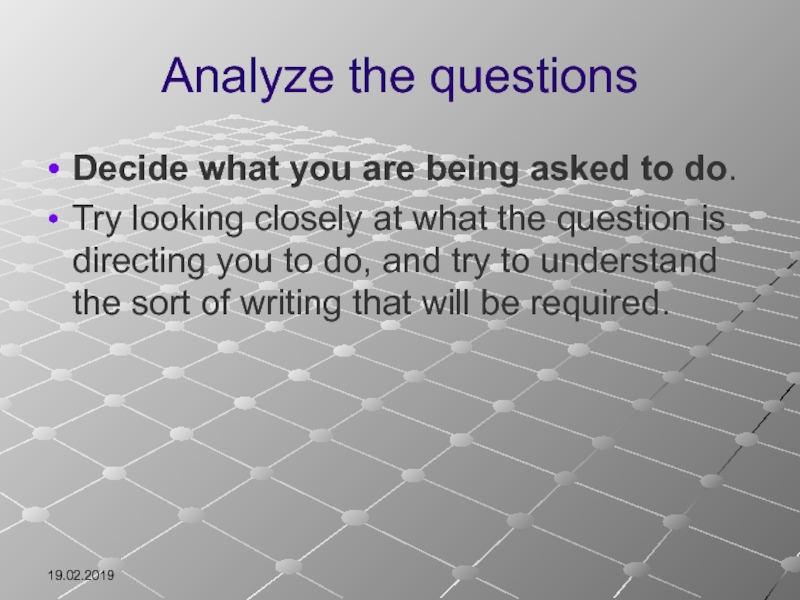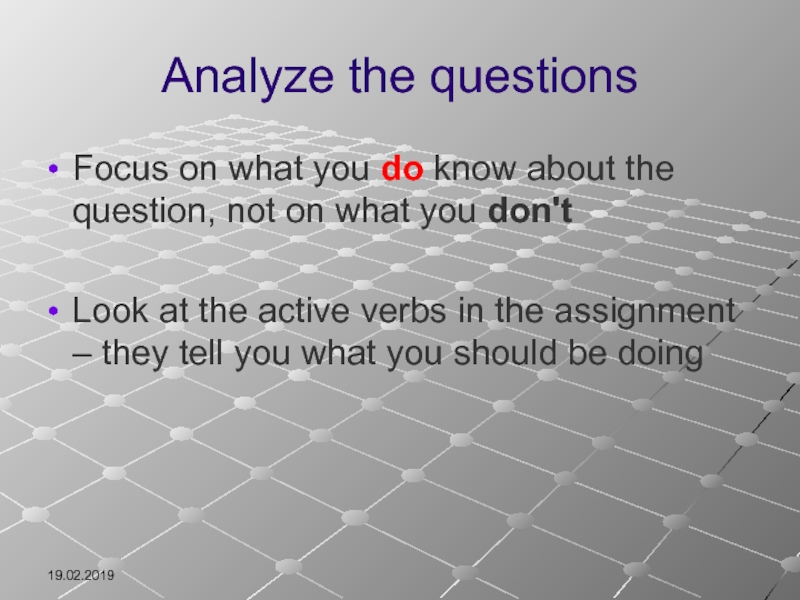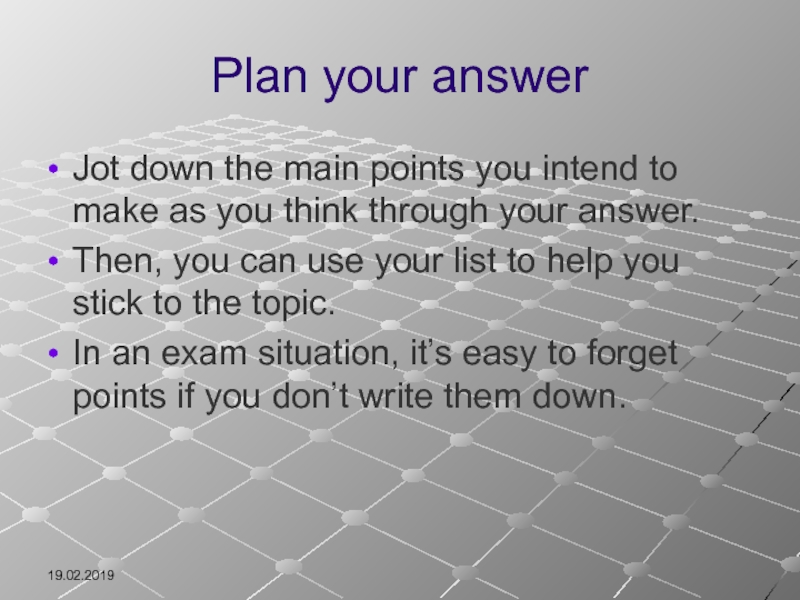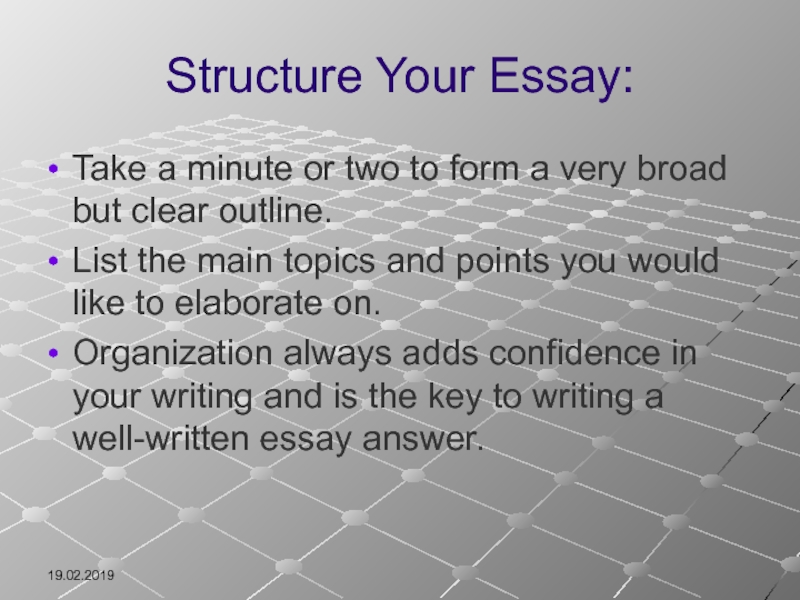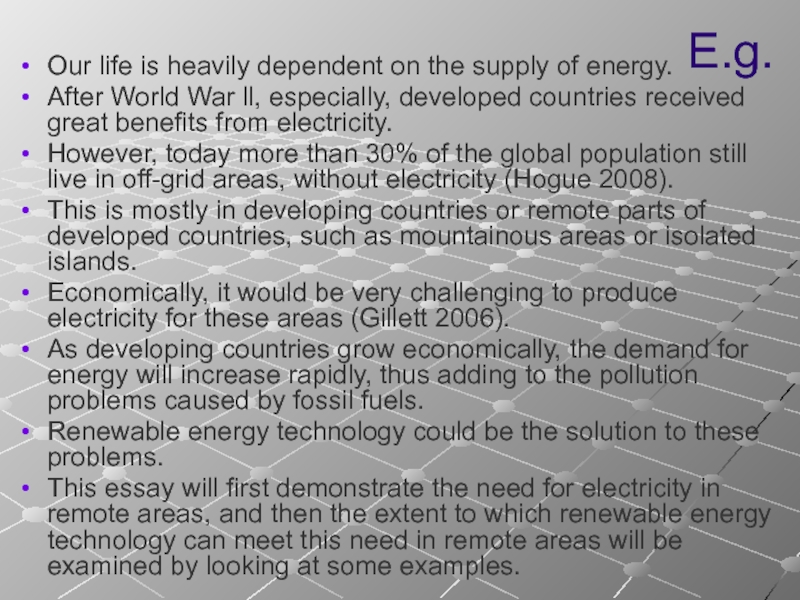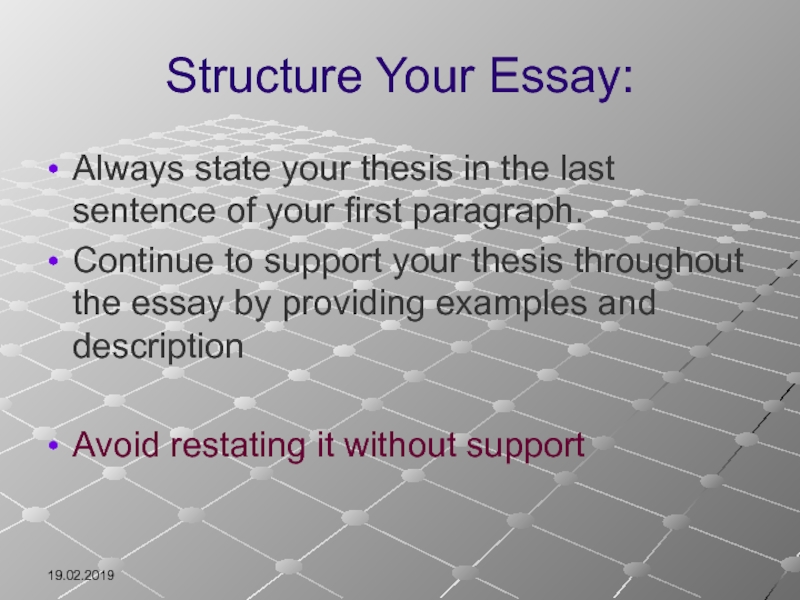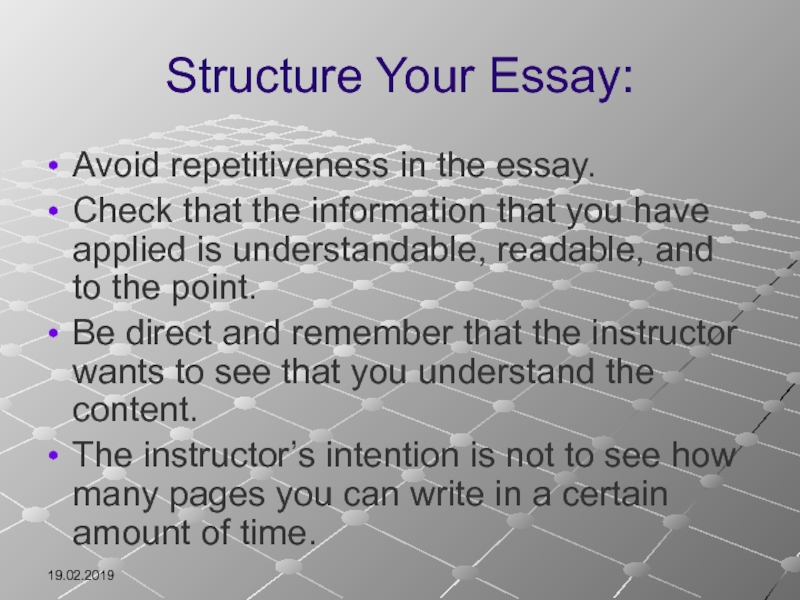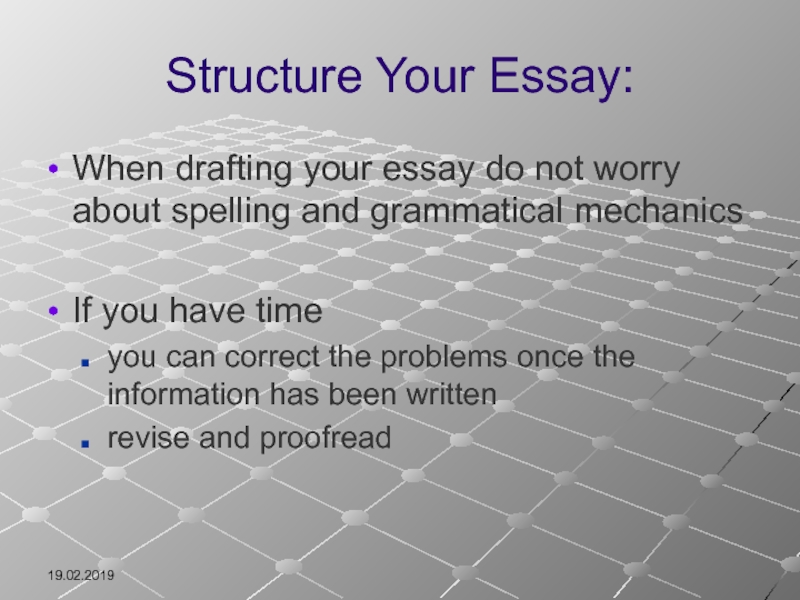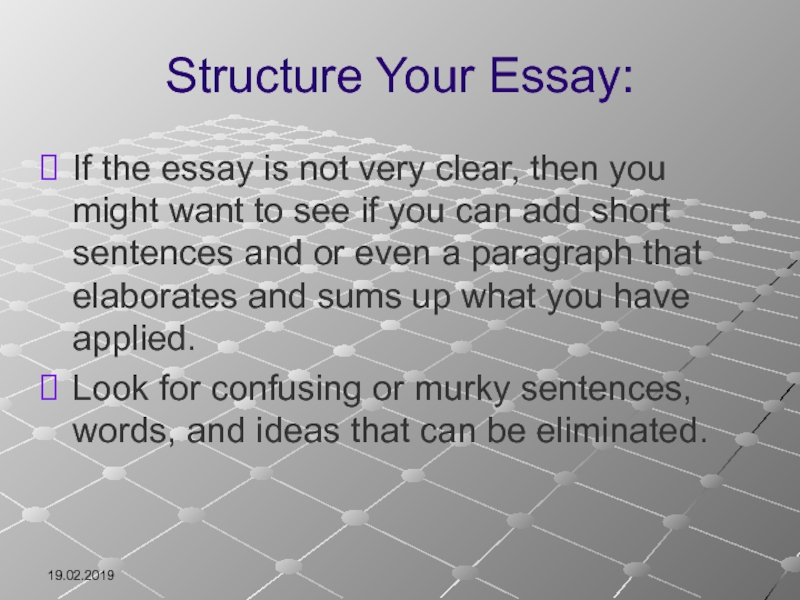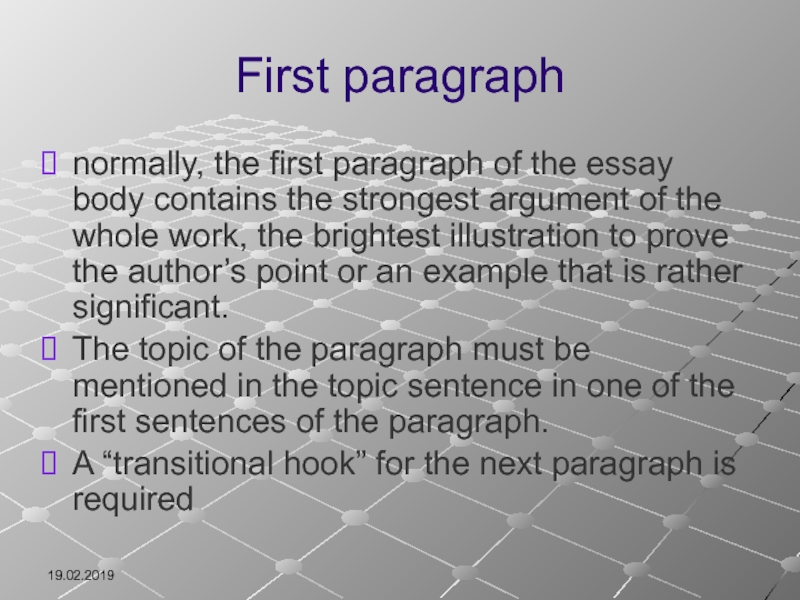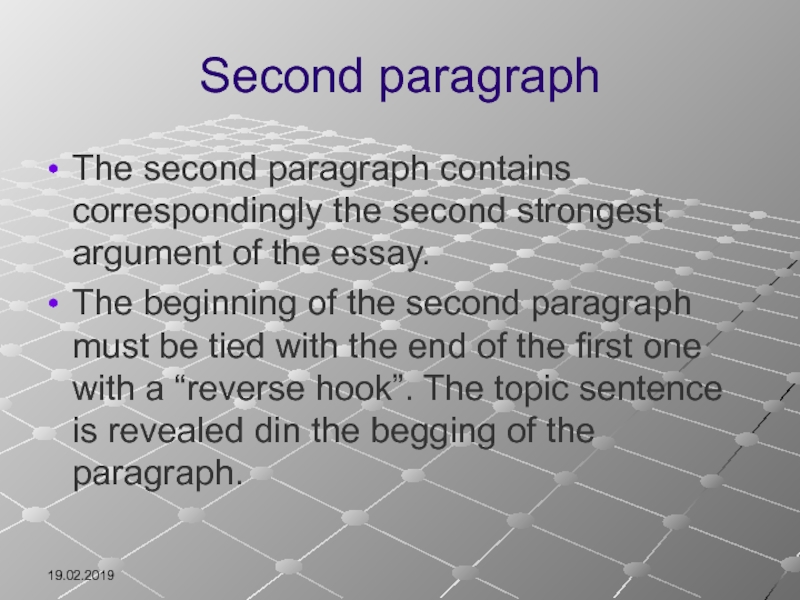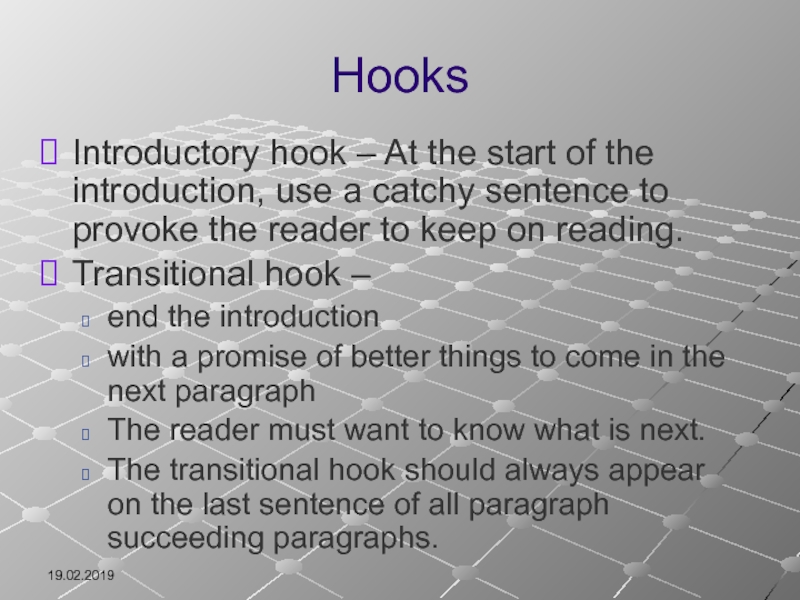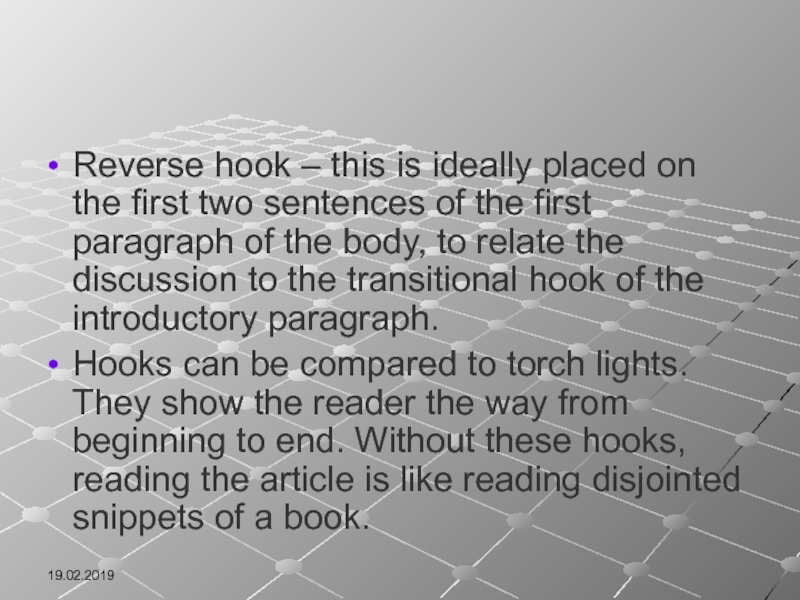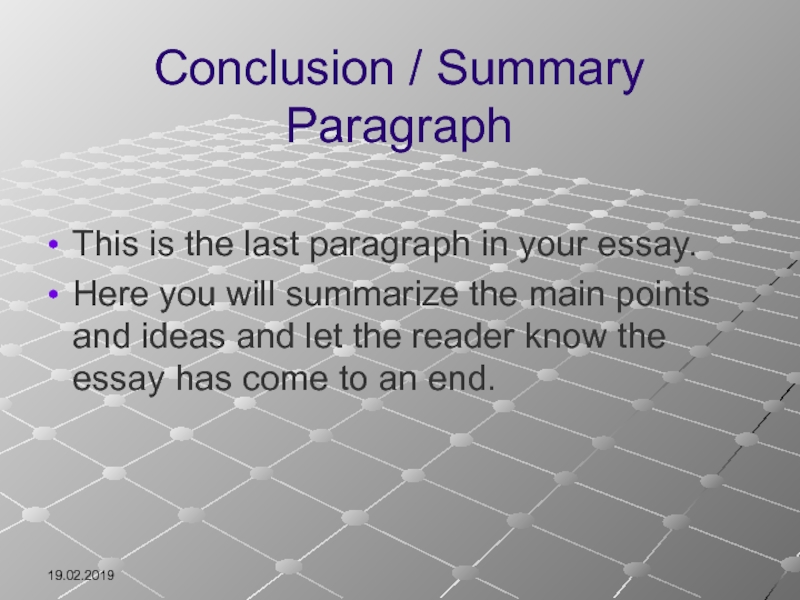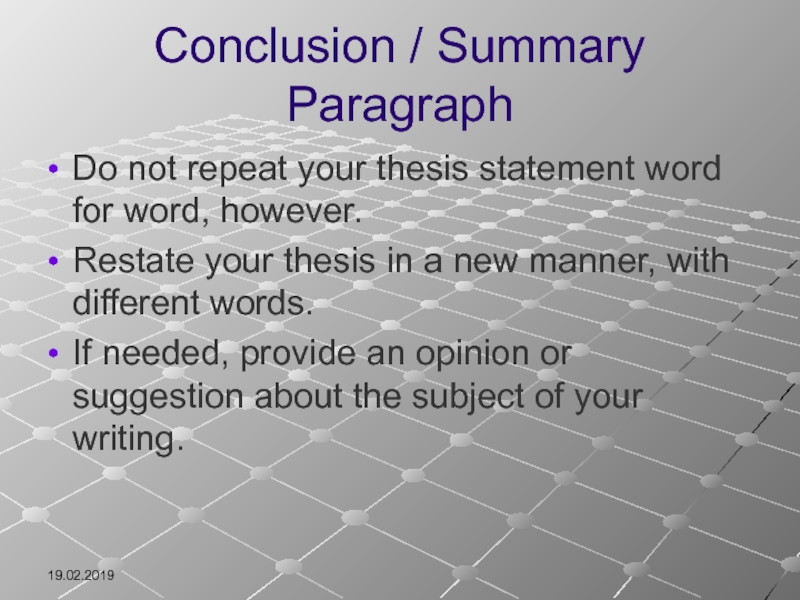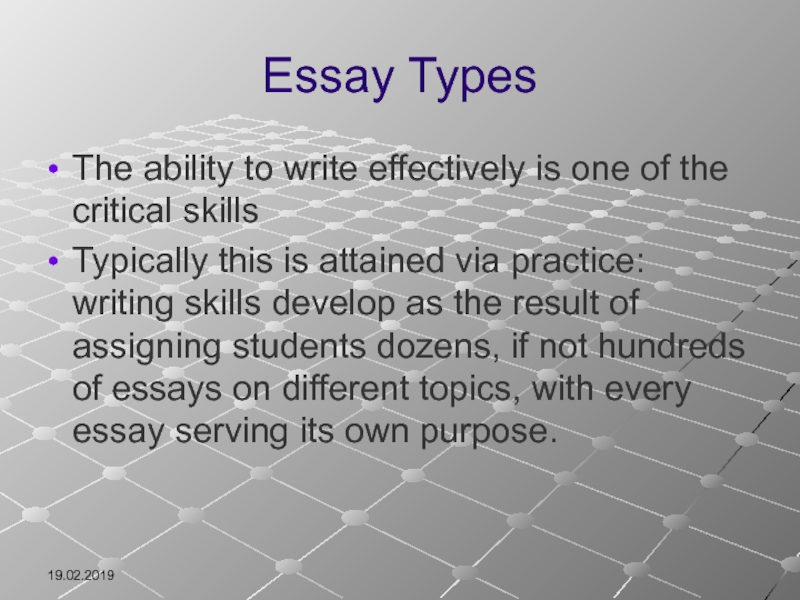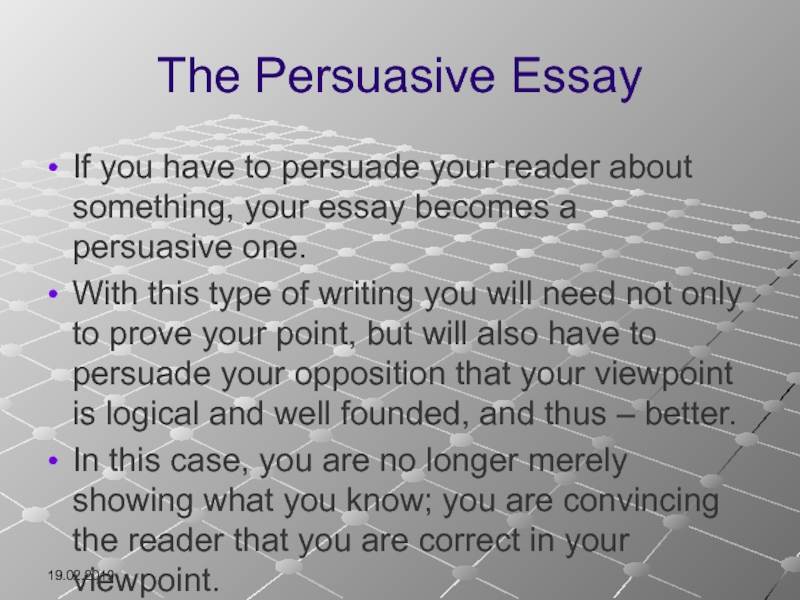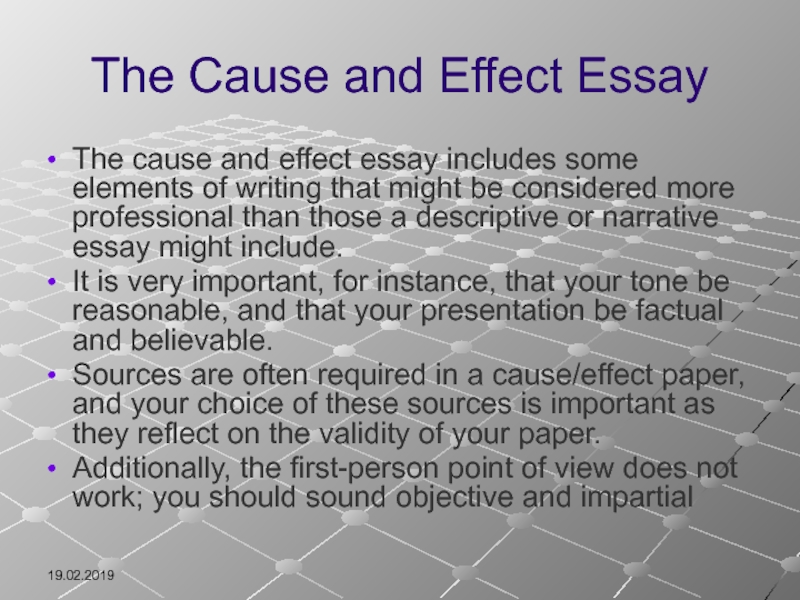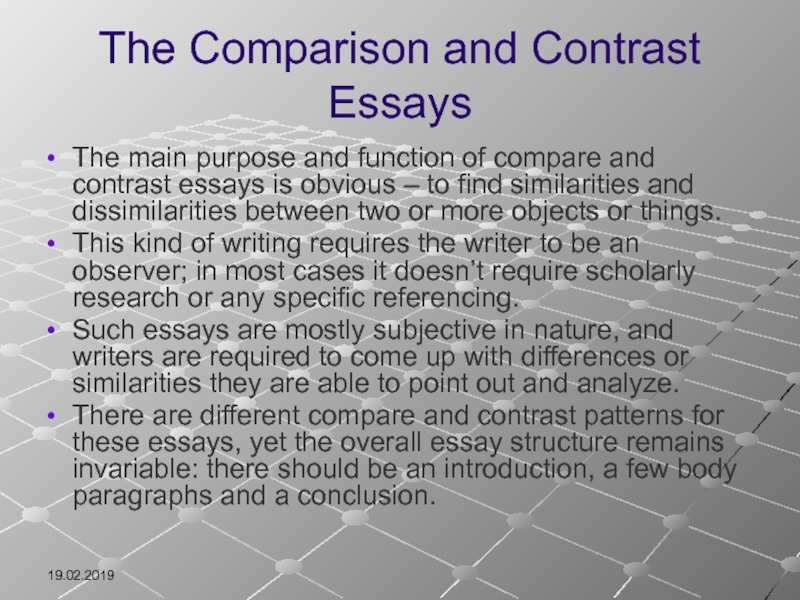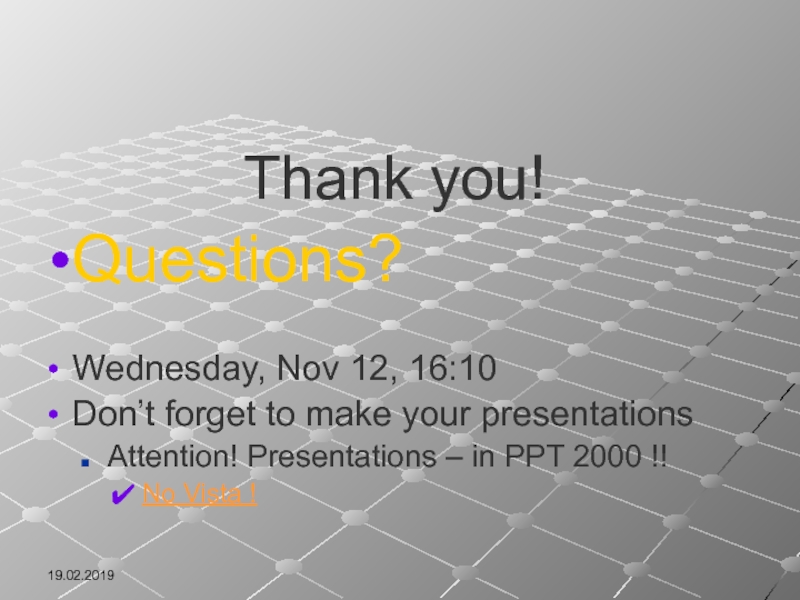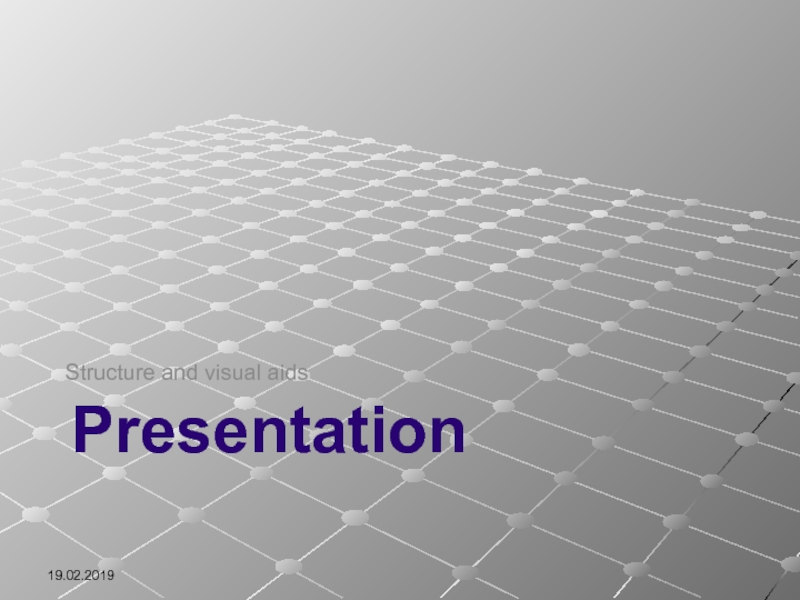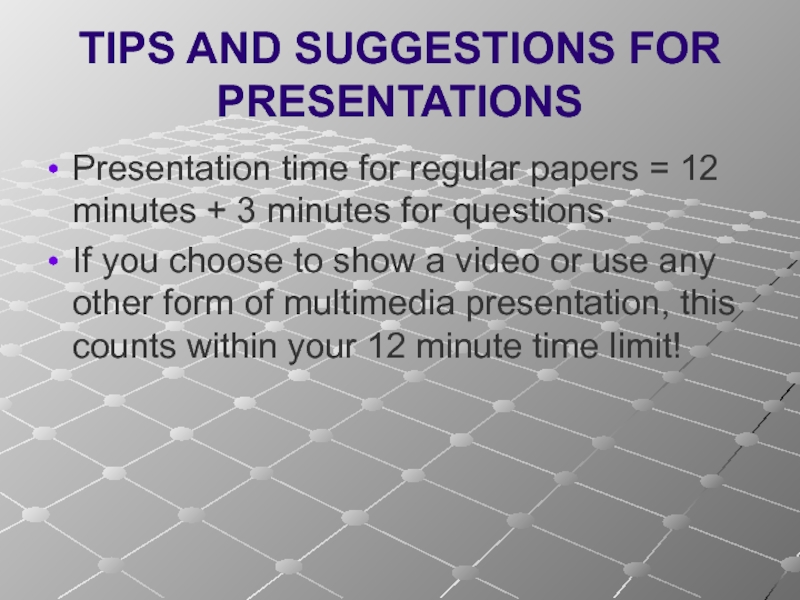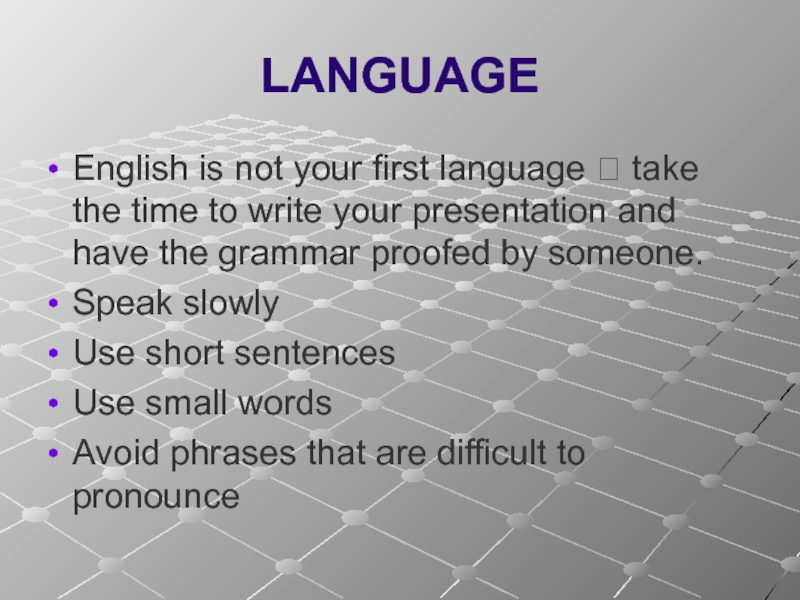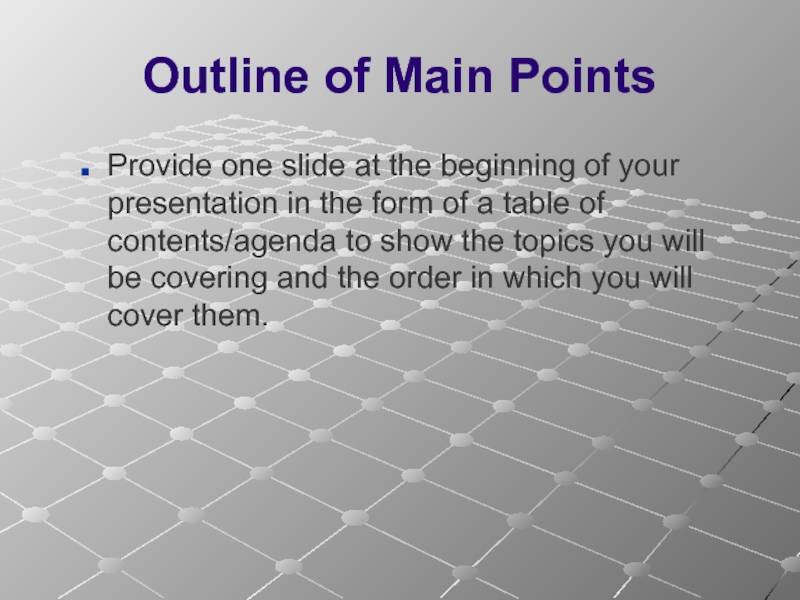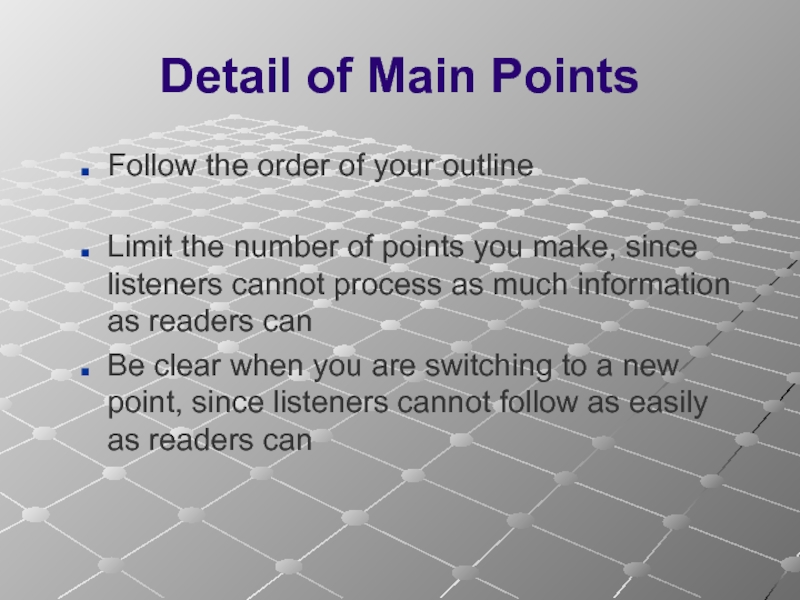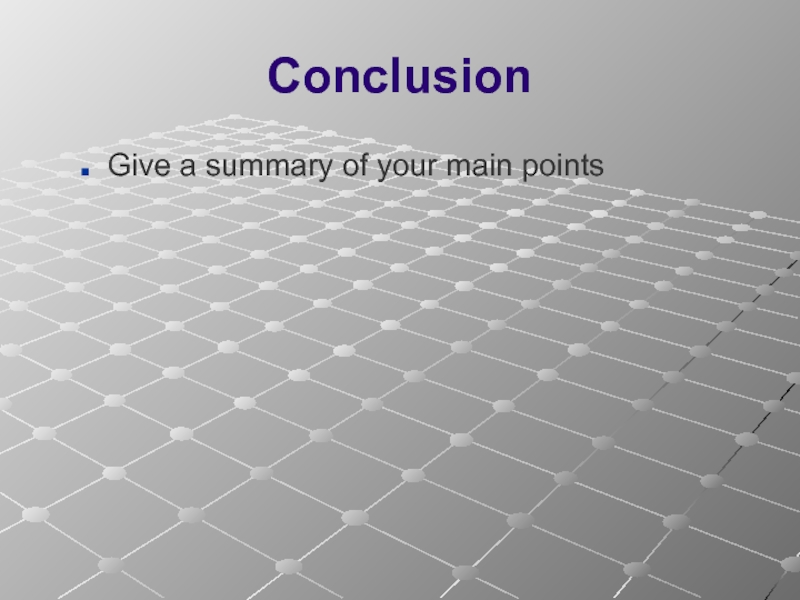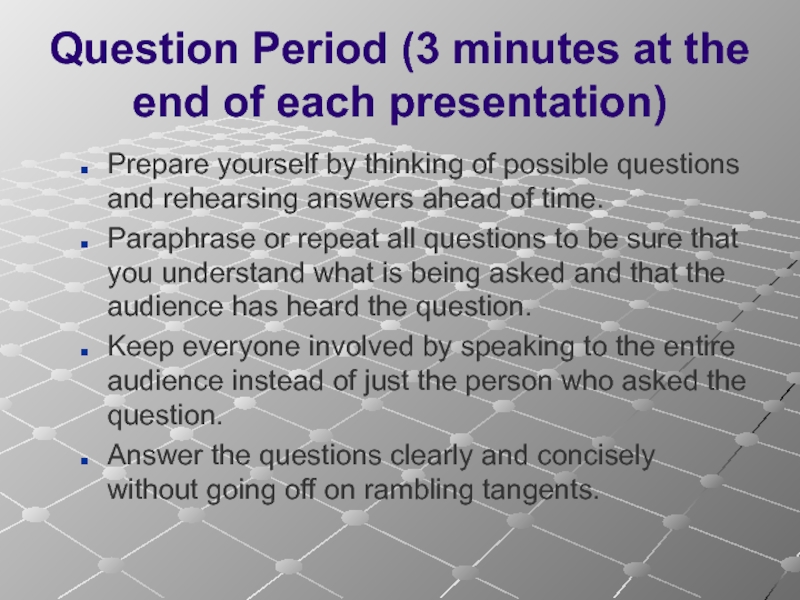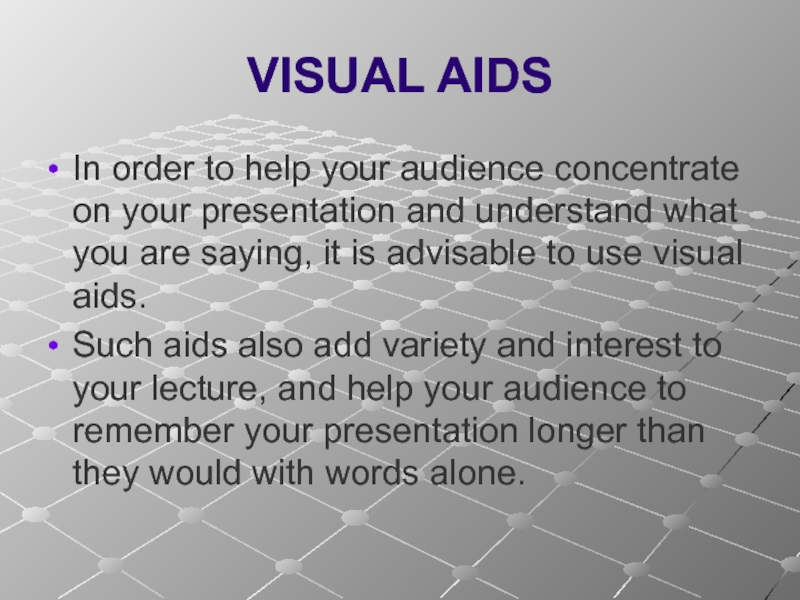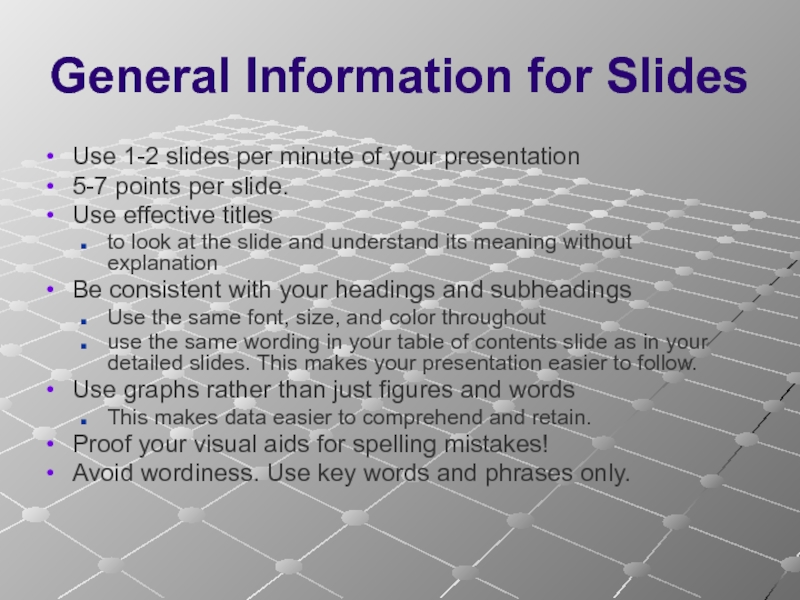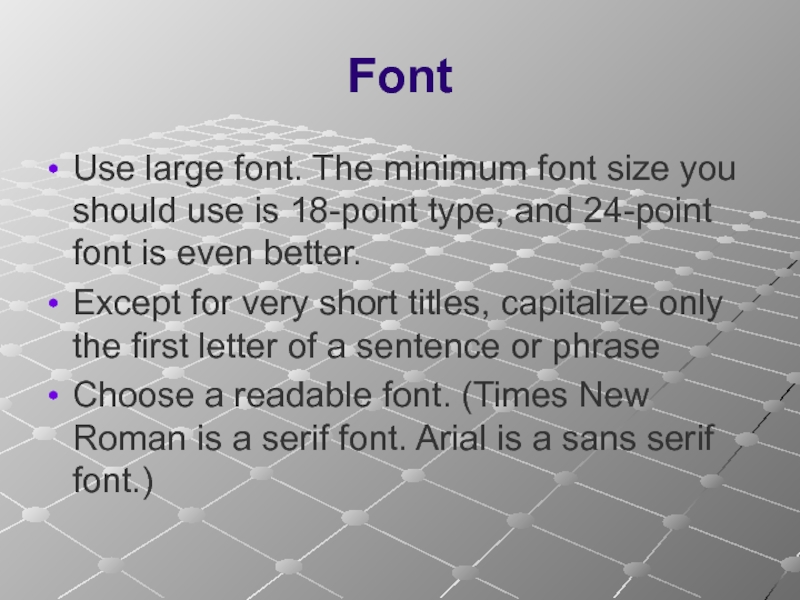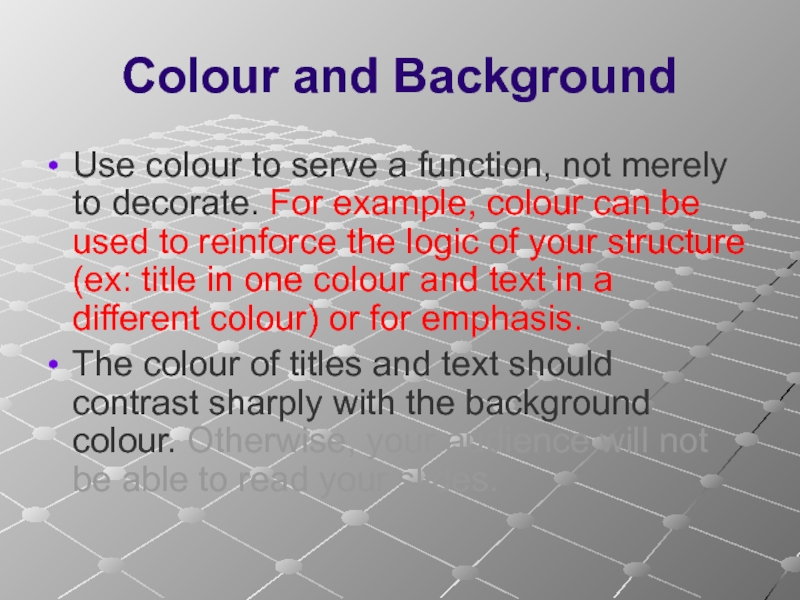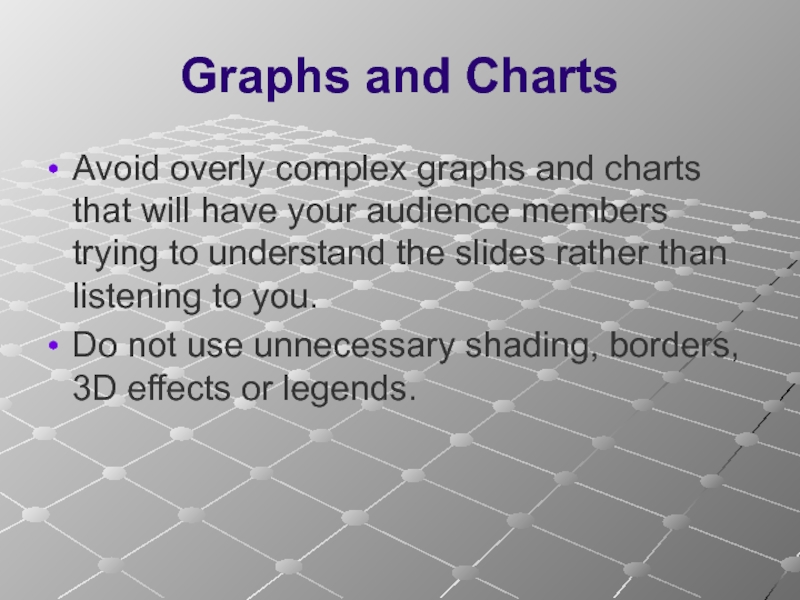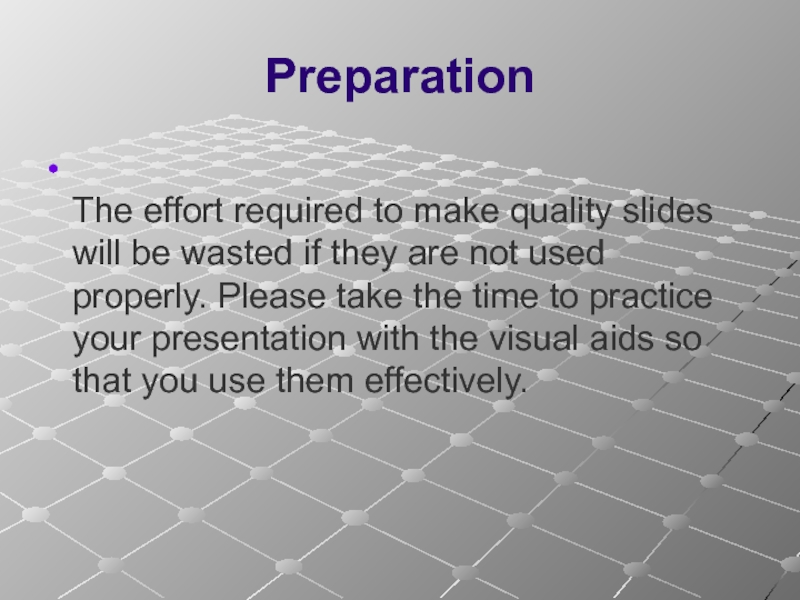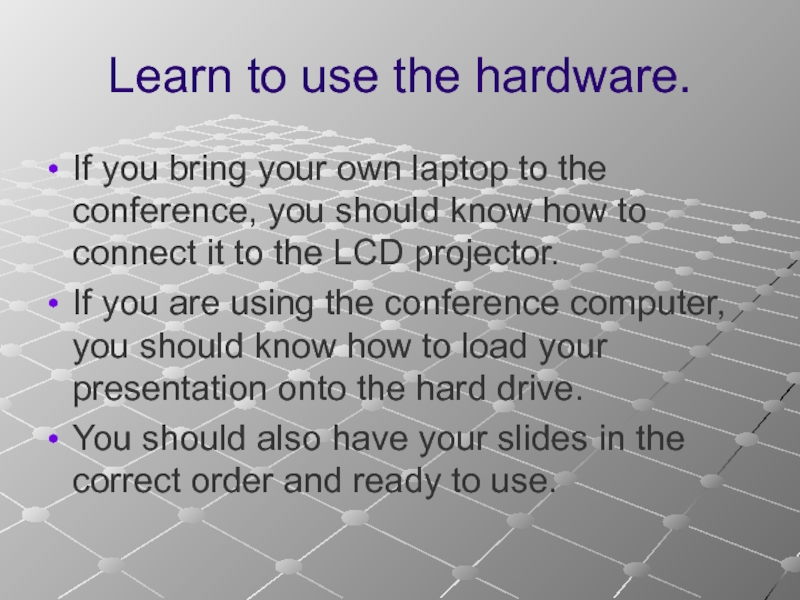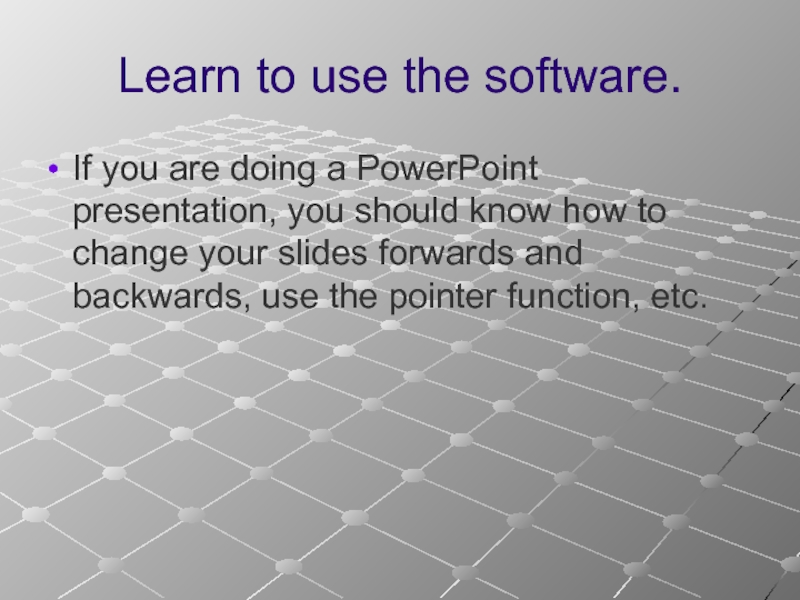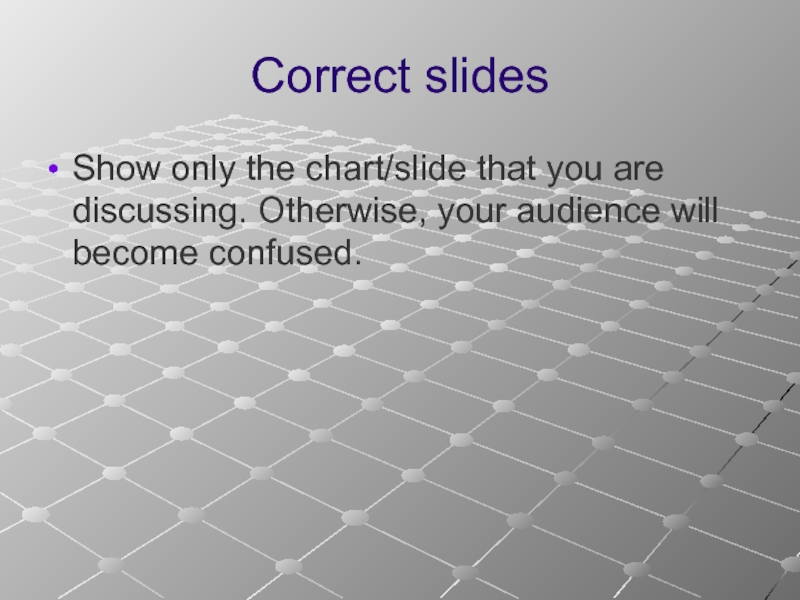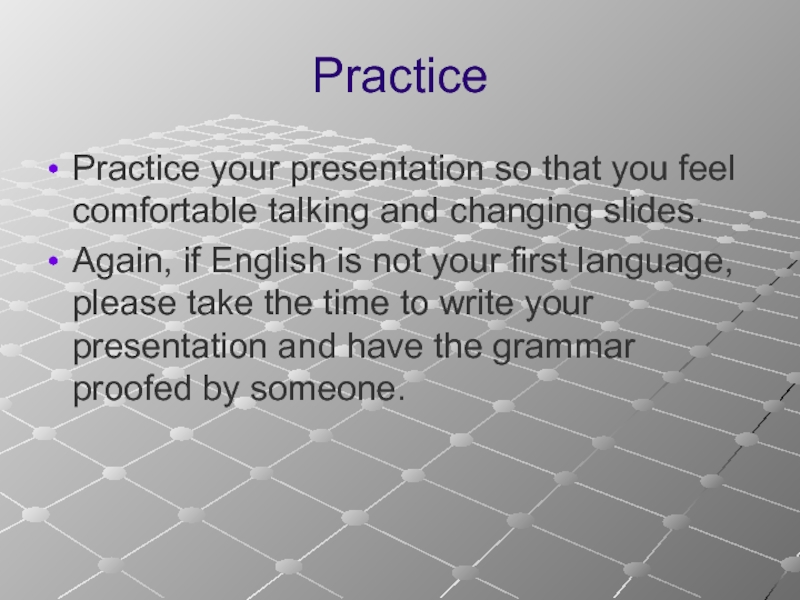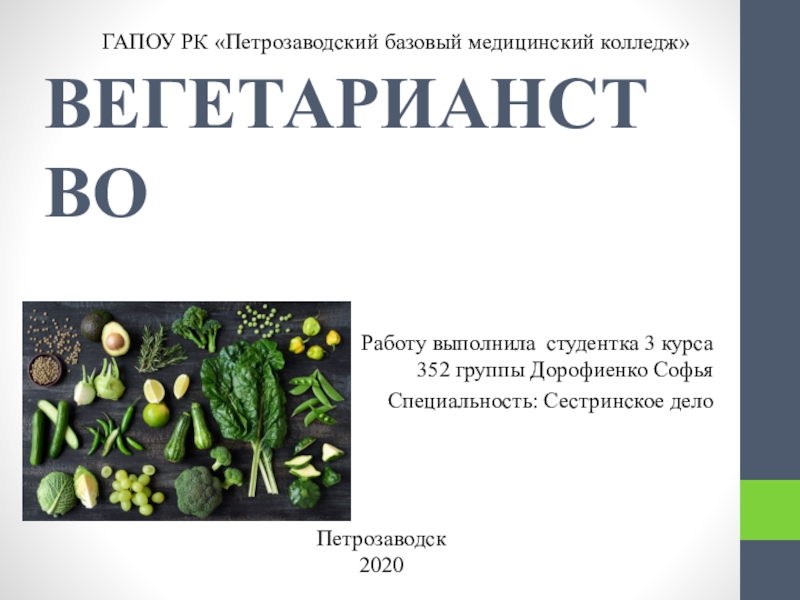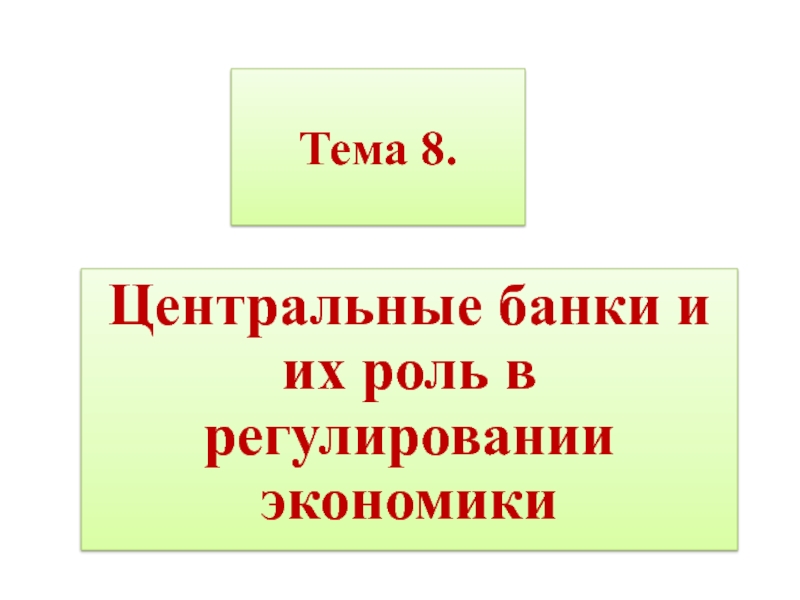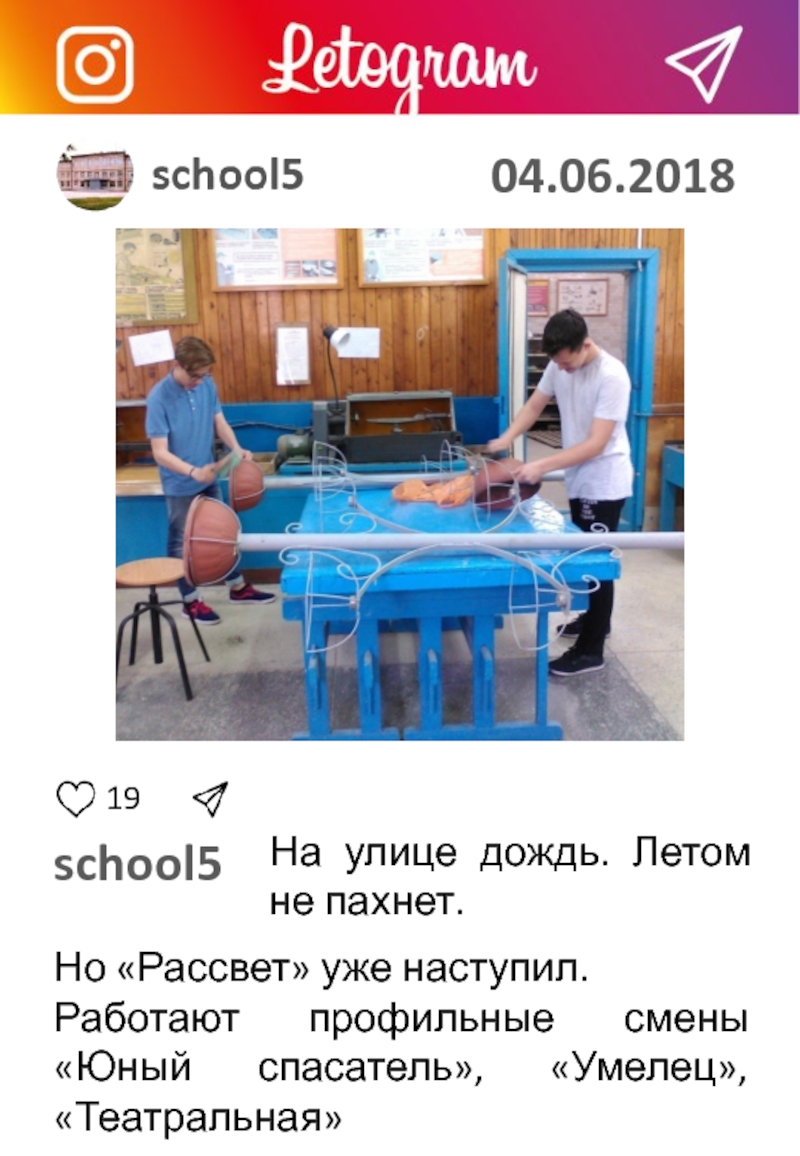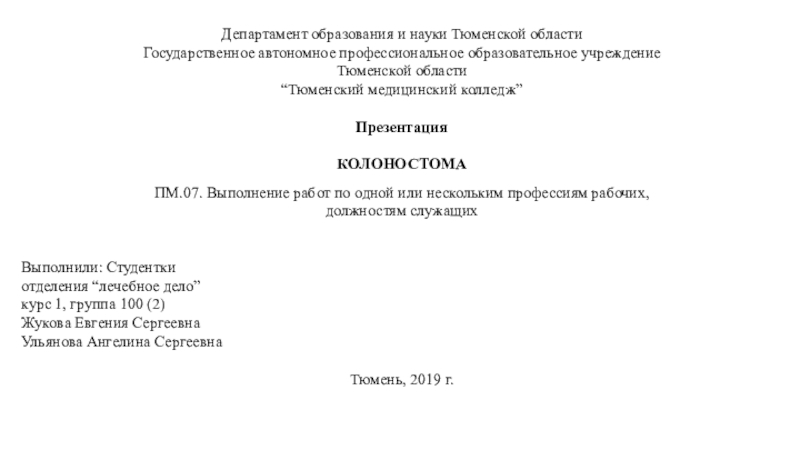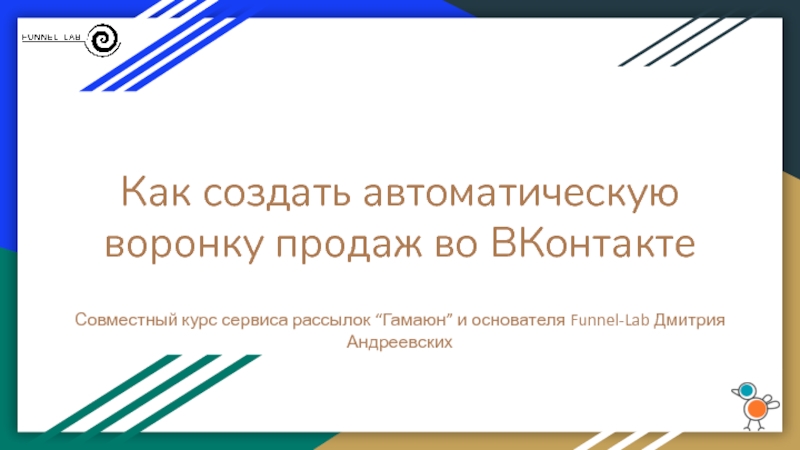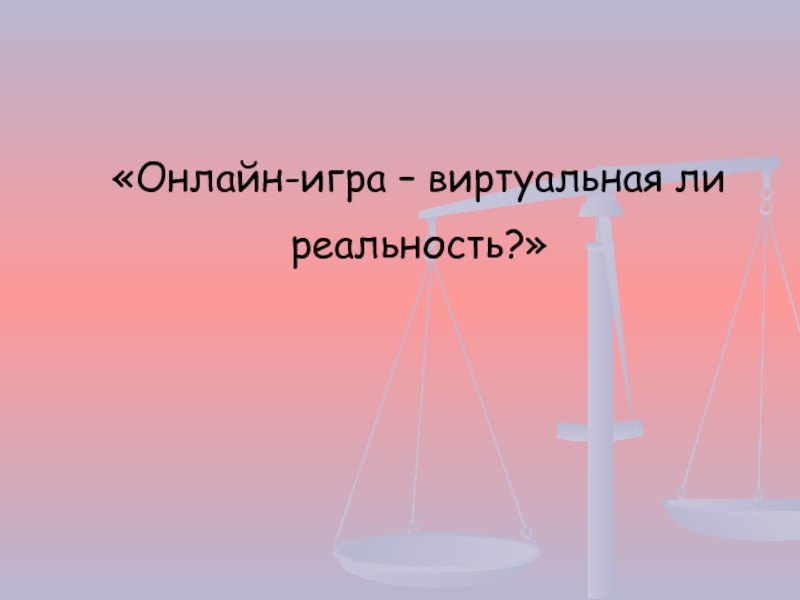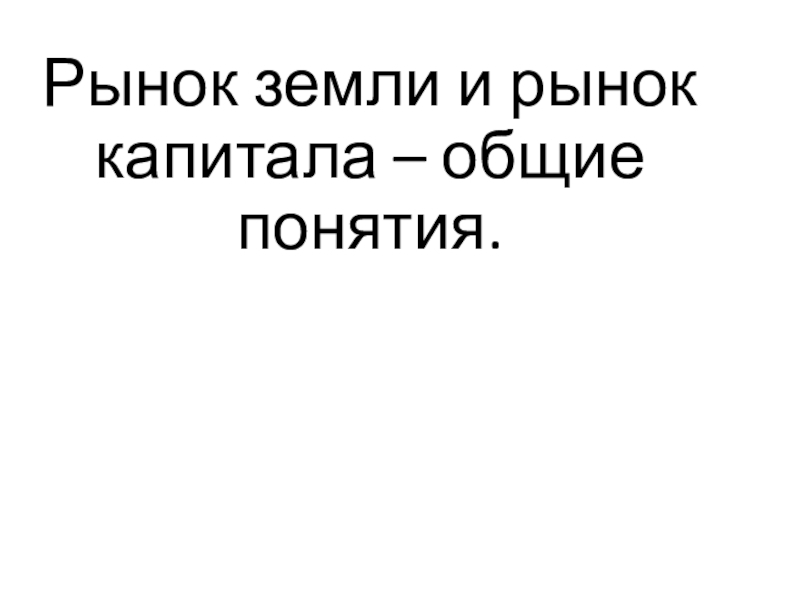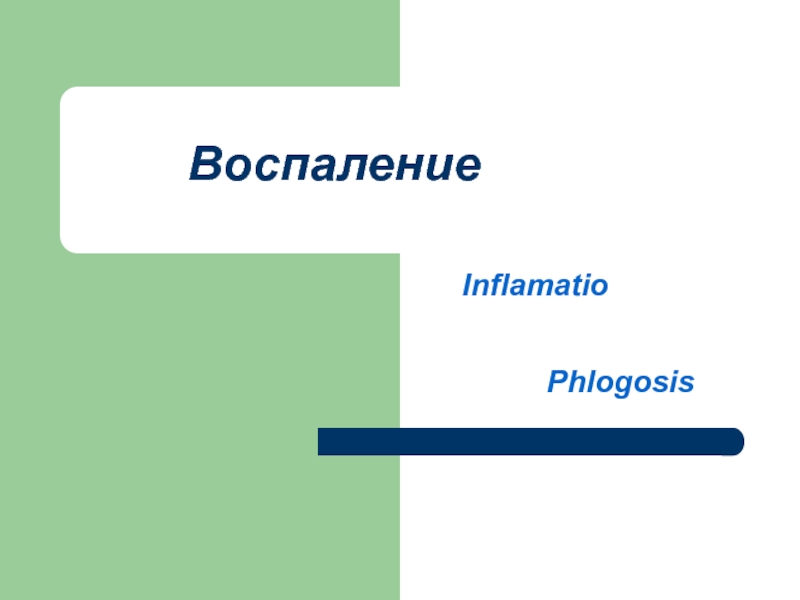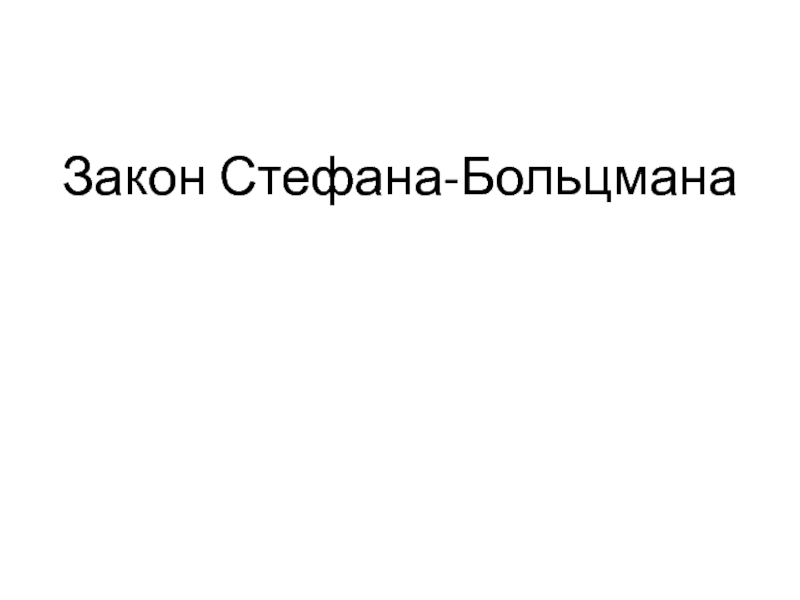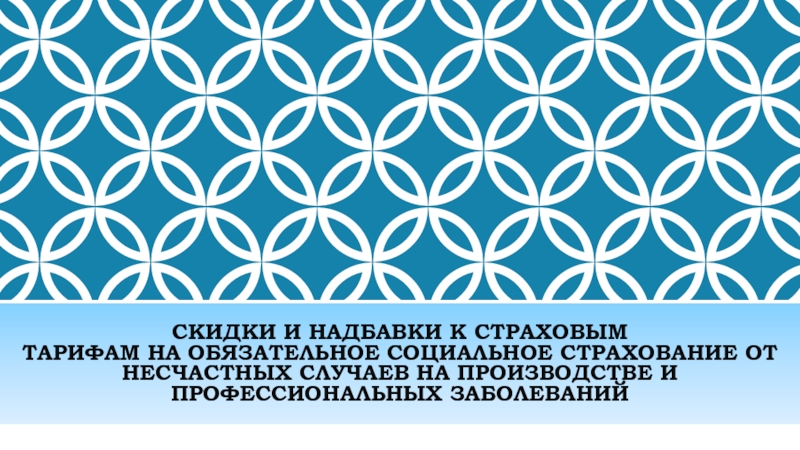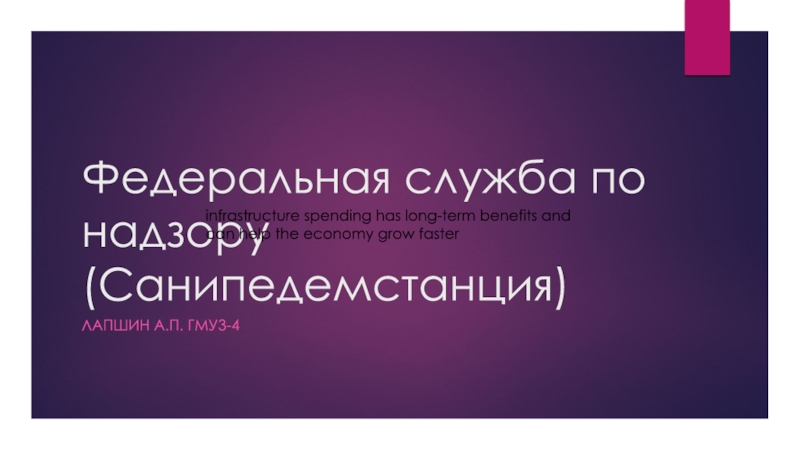Разделы презентаций
- Разное
- Английский язык
- Астрономия
- Алгебра
- Биология
- География
- Геометрия
- Детские презентации
- Информатика
- История
- Литература
- Математика
- Медицина
- Менеджмент
- Музыка
- МХК
- Немецкий язык
- ОБЖ
- Обществознание
- Окружающий мир
- Педагогика
- Русский язык
- Технология
- Физика
- Философия
- Химия
- Шаблоны, картинки для презентаций
- Экология
- Экономика
- Юриспруденция
Methodolog y
Содержание
- 1. Methodolog y
- 2. AssessmentThe whole score for this course is
- 3. Presentation (8 points)Presentation topicsYour choice of topicsFormal
- 4. Examination (12 points)Written examlasts 1 hour =
- 5. Methodology2015 Nov 6Nadezhda N. Pokrovskaiannp@europe.comDetailed plan
- 6. Structure Your Essay Structure your paragraphs clearlyUse
- 7. Detailed planIntro1 – 1.1. 1.1.1.1.1.2.A – e.g.B – …1.1.3.1.2. …2 …Conclusion
- 8. Detailed plan – content 1Intro1 – Main
- 9. Detailed plan – content 22 – Pro
- 10. Detailed plan – content 33 – Contras,
- 11. Detailed plan – content 44 – Actual
- 12. Methodology2015 Nov 6Nadezhda N. Pokrovskaiannp@europe.comExam Taking Strategy
- 13. If you see one of these terms,
- 14. If you see one of these terms,
- 15. Write an Exam5 minutesEssay = 5 pointsDefine
- 16. Read the questions thoroughly Take a few
- 17. Read the questions thoroughly Read the questions
- 18. Analyze the questionsDecide what you are being
- 19. Analyze the questionsFocus on what you do
- 20. Plan your answerJot down the main points
- 21. Structure Your Essay: Take a minute or
- 22. E.g.Our life is heavily dependent on the
- 23. Structure Your Essay: Always state your thesis
- 24. Structure Your Essay: Avoid repetitiveness in the
- 25. Structure Your Essay: When drafting your essay
- 26. Structure Your Essay: If the essay is
- 27. Write out your essay, using good writing
- 28. ESSAY STRUCTUREEssay Components
- 29. The Thesis Statement / Introduction ParagraphThis is
- 30. The thesis statement is the leader of
- 31. Supporting Paragraphs:Everything written after the thesis statement
- 32. First paragraphnormally, the first paragraph of the
- 33. Second paragraph The second paragraph contains correspondingly
- 34. Third paragraph The third paragraph opens the
- 35. HooksIntroductory hook – At the start of
- 36. Reverse hook – this is ideally placed
- 37. Conclusion / Summary ParagraphThis is the last
- 38. Conclusion / Summary ParagraphDo not repeat your
- 39. Essay typesEssay Content
- 40. Essay TypesThe ability to write effectively is
- 41. The Definition EssayThe main function of the
- 42. The Persuasive EssayIf you have to persuade
- 43. The Argumentative EssayThe art of argumentation is
- 44. The Cause and Effect EssayThe cause and
- 45. The Comparison and Contrast EssaysThe main purpose
- 46. Thank you!Questions?Wednesday, Nov 12, 16:10Don’t forget to
- 47. PresentationStructure and visual aids
- 48. TIPS AND SUGGESTIONS FOR PRESENTATIONSPresentation time for
- 49. LANGUAGEEnglish is not your first language
- 50. PRESENTATION STRUCTUREAn effective oral presentation should be structured accordingly:
- 51. OpeningArouse your audience's interestDemonstrate why the topic is important (ie: why they should listen to you)
- 52. Outline of Main PointsProvide one slide at
- 53. Detail of Main PointsFollow the order of
- 54. ConclusionGive a summary of your main points
- 55. Question Period (3 minutes at the end
- 56. VISUAL AIDSIn order to help your audience
- 57. General Information for SlidesUse 1-2 slides per
- 58. FontUse large font. The minimum font size
- 59. Colour and BackgroundUse colour to serve a
- 60. Graphs and ChartsAvoid overly complex graphs and
- 61. Preparation The effort required to make quality
- 62. Learn to use the hardware. If you
- 63. Learn to use the software.If you are
- 64. Correct slidesShow only the chart/slide that you are discussing. Otherwise, your audience will become confused.
- 65. PracticePractice your presentation so that you feel
- 66. Скачать презентанцию
Слайды и текст этой презентации
Слайд 1Methodology
Autumn 2015
(ac. year 2015-2016)
Nadezhda N. Pokrovskaia
PhD in Economics ;
Doctoral degree in Sociology
Слайд 2Assessment
The whole score for this course is maximum 20 points
and includes 2 parts:
+ 8 points for the presentation
(individually)
+ 12
points for the written exam results
(open question for 5 pts + case study for 7 pts).Слайд 3Presentation (8 points)
Presentation topics
Your choice of topics
Formal requirements :
Power
Point Presentation .ppt – 2000, Not Vista !
3-5 minutes
3-10 pages
Presentation
is to be presented to other students 14 Nov
Delay reduces 4 points !
Sent to nnp @ europe.com the same day
Слайд 4Examination (12 points)
Written exam
lasts 1 hour = 60 minutes
The exam
includes:
Essay or annotation – 5 points
Detailed plan – 7 points.
You
should ask your manager about the date of the Exam (10-14 Feb 2016)Слайд 6Structure Your Essay
Structure your paragraphs clearly
Use headings, numbering, and
other technical formats to emphasize your main points
Use examples, facts,
and explanations to support your ideas. Слайд 8Detailed plan – content 1
Intro
1 – Main idea or Essential
topic
1.1. History and reasons of creation
1.1.1.Environment which needed to
be solved1.1.2.What did prepare the solution?
1.1.3.Who where the main actors who were involved in solving?
1.2.The main idea of the topic
1.3. and its different aspects
Слайд 9Detailed plan – content 2
2 – Pro or implementations
2.1. The
first essential results
2.1.1. The problem was it solved ?
2.1.2. What
positive consequences else ?2.2. Practical implementations
2.2.1. The essential one
2.2.1.1. example
2.2.2. The additional ones
2.2.2.1. example
2.3. Results as basis for further improving in some fields
Слайд 10Detailed plan – content 3
3 – Contras, negative consequences
3.1. The
obstacles
3.1.1.How did they interfere ? What the groups or objects
which suffered ?3.1.2.What was the mechanism of their action ?
3.1.3.What were the solutions or they are not found until today?
3.2. The consequences
3.3. The alternative solutions ?
Conclusion
Слайд 11Detailed plan – content 4
4 – Actual situation in the
field
4.1. Possible versions (alternative solutions)
4.1.1.Involved actors
4.1.2. ….
4.2. The pro and
contras4.3. The reasons, why it is nod solved yet
Conclusion
Слайд 13If you see one of these terms, try to organize
your essay to respond to the question or questions indicated
: – 1evaluate: What are the arguments for and against this idea? Which arguments are stronger?
Assess: What are the arguments for and against this idea?
identify: What is this idea? What is its name?
interpret: What does this idea mean? Why is it important?
justify: Why is this correct? Why is this true?
outline: What are the main points and essential details?
summarize: Briefly, what are the important ideas?
trace: What is the sequence of ideas or order of events?
Слайд 14If you see one of these terms, try to organize
your essay to respond to the question or questions indicated:
– 2classify: Into what general category/categories does this idea belong?
compare: What are the similarities among these ideas? What are the differences?
contrast: What are the differences between these ideas?
critique: What are the strengths and weaknesses of this idea?
define: What does this word or phrase mean?
describe: What are the important characteristics or features of this idea?
Слайд 15Write an Exam
5 minutes
Essay = 5 points
Define Financial motivation in
HRM
Detailed plan = 7 points
Describe Post-modern Management theories
Слайд 16Read the questions thoroughly
Take a few minutes before writing
your essay to read the question carefully
determine exactly what you
are being asked to doMost essay exam questions, or “prompts,” are carefully worded and contain specific instructions:
WHAT you are to write about
HOW you should organize your answer
Слайд 17Read the questions thoroughly
Read the questions carefully, and mark
and circle the key words, such as the action verbs
and the subjectif you do not understand the structure of the questions, ask the professor for clarification
Choose a key word from the topic in order to introduce your essay.
Слайд 18Analyze the questions
Decide what you are being asked to do.
Try looking closely at what the question is directing you
to do, and try to understand the sort of writing that will be required. Слайд 19Analyze the questions
Focus on what you do know about the
question, not on what you don't
Look at the active verbs
in the assignment – they tell you what you should be doingСлайд 20Plan your answer
Jot down the main points you intend to
make as you think through your answer.
Then, you can use
your list to help you stick to the topic.In an exam situation, it’s easy to forget points if you don’t write them down.
Слайд 21Structure Your Essay:
Take a minute or two to form
a very broad but clear outline.
List the main topics
and points you would like to elaborate on. Organization always adds confidence in your writing and is the key to writing a well-written essay answer.
Слайд 22E.g.
Our life is heavily dependent on the supply of energy.
After
World War ll, especially, developed countries received great benefits from
electricity.However, today more than 30% of the global population still live in off-grid areas, without electricity (Hogue 2008).
This is mostly in developing countries or remote parts of developed countries, such as mountainous areas or isolated islands.
Economically, it would be very challenging to produce electricity for these areas (Gillett 2006).
As developing countries grow economically, the demand for energy will increase rapidly, thus adding to the pollution problems caused by fossil fuels.
Renewable energy technology could be the solution to these problems.
This essay will first demonstrate the need for electricity in remote areas, and then the extent to which renewable energy technology can meet this need in remote areas will be examined by looking at some examples.
Слайд 23Structure Your Essay:
Always state your thesis in the last
sentence of your first paragraph.
Continue to support your thesis
throughout the essay by providing examples and descriptionAvoid restating it without support
Слайд 24Structure Your Essay:
Avoid repetitiveness in the essay.
Check that the
information that you have applied is understandable, readable, and to
the point.Be direct and remember that the instructor wants to see that you understand the content.
The instructor’s intention is not to see how many pages you can write in a certain amount of time.
Слайд 25Structure Your Essay:
When drafting your essay do not worry
about spelling and grammatical mechanics
If you have time
you can correct
the problems once the information has been writtenrevise and proofread
Слайд 26Structure Your Essay:
If the essay is not very clear,
then you might want to see if you can add
short sentences and or even a paragraph that elaborates and sums up what you have applied.Look for confusing or murky sentences, words, and ideas that can be eliminated.
Слайд 27Write out your essay, using good writing techniques
As was said
earlier, essay exams are like other essays, so use the
same good writing strategies you use for other kinds of writing.Keep in mind that your purpose is to persuade your reader—the examiner—that you know the material.
Слайд 29The Thesis Statement / Introduction Paragraph
This is the most important
part of any well-written essay. Usually limited to one or
two sentences, the thesis statement is the main idea, or topic, of your essay.An essay without a strong and clearly defined thesis statement is like a ship without a captain. The essay will drift aimlessly without a clear direction.
Слайд 30The thesis statement is the leader of your essay, because
every other word written afterward is there to support it.
Before
you ever begin writing you must come up with a solid thesis statement. It is usually placed early in the text, in the first paragraph. This first paragraph is called the introduction paragraph, because it introduces the topic of your essay.
Слайд 31Supporting Paragraphs:
Everything written after the thesis statement is there to
support it. The ideas you choose to support your thesis
statement need to be separated into paragraphs.Each paragraph will develop one, and only one, supporting idea or point.
These ideas need to be supported within the paragraph, not just stated. Back up your ideas with additional information about them.
Also, be sure to make smooth transitions between each of your supporting paragraphs, don’t just jump from one idea to the other.
Слайд 32First paragraph
normally, the first paragraph of the essay body contains
the strongest argument of the whole work, the brightest illustration
to prove the author’s point or an example that is rather significant.The topic of the paragraph must be mentioned in the topic sentence in one of the first sentences of the paragraph.
A “transitional hook” for the next paragraph is required
Слайд 33Second paragraph
The second paragraph contains correspondingly the second strongest
argument of the essay.
The beginning of the second paragraph
must be tied with the end of the first one with a “reverse hook”. The topic sentence is revealed din the begging of the paragraph. Слайд 34Third paragraph
The third paragraph opens the weakest argument to
the reader. The topic sentence is to be related or
reflect the thesis statement of the essay.The major point of the essay starts to be revealed and through a “transitional hook” continues in the concluding paragraph
Слайд 35Hooks
Introductory hook – At the start of the introduction, use
a catchy sentence to provoke the reader to keep on
reading.Transitional hook –
end the introduction
with a promise of better things to come in the next paragraph
The reader must want to know what is next.
The transitional hook should always appear on the last sentence of all paragraph succeeding paragraphs.
Слайд 36Reverse hook – this is ideally placed on the first
two sentences of the first paragraph of the body, to
relate the discussion to the transitional hook of the introductory paragraph.Hooks can be compared to torch lights. They show the reader the way from beginning to end. Without these hooks, reading the article is like reading disjointed snippets of a book.
Слайд 37Conclusion / Summary Paragraph
This is the last paragraph in your
essay.
Here you will summarize the main points and ideas and
let the reader know the essay has come to an end. Слайд 38Conclusion / Summary Paragraph
Do not repeat your thesis statement word
for word, however.
Restate your thesis in a new manner, with
different words.If needed, provide an opinion or suggestion about the subject of your writing.
Слайд 40Essay Types
The ability to write effectively is one of the
critical skills
Typically this is attained via practice: writing skills develop
as the result of assigning students dozens, if not hundreds of essays on different topics, with every essay serving its own purpose.Слайд 41The Definition Essay
The main function of the definition essay is
to explain, or to acquaint your reader with something; it
can be used to describe, explain or present some information.In order to write an expository essay, preparation and background research will be required. This will arm you with facts and information that will be subsequently conveyed to your reader.
No matter the size, an essay should at all times include an introduction and a conclusion – the body length may vary.
Слайд 42The Persuasive Essay
If you have to persuade your reader about
something, your essay becomes a persuasive one.
With this type
of writing you will need not only to prove your point, but will also have to persuade your opposition that your viewpoint is logical and well founded, and thus – better. In this case, you are no longer merely showing what you know; you are convincing the reader that you are correct in your viewpoint.
Слайд 43The Argumentative Essay
The art of argumentation is not an easy
skill to acquire.
Many people might think that if one
simply has an opinion, one can argue it effectively, and these folks are always surprised when others don't agree with them because their logic seems so correct. Additionally, writers of argumentation often forget that their primary purpose in an argument is to "win" it – to sway the reader to accept their point of view.
Слайд 44The Cause and Effect Essay
The cause and effect essay includes
some elements of writing that might be considered more professional
than those a descriptive or narrative essay might include.It is very important, for instance, that your tone be reasonable, and that your presentation be factual and believable.
Sources are often required in a cause/effect paper, and your choice of these sources is important as they reflect on the validity of your paper.
Additionally, the first-person point of view does not work; you should sound objective and impartial
Слайд 45The Comparison and Contrast Essays
The main purpose and function of
compare and contrast essays is obvious – to find similarities
and dissimilarities between two or more objects or things.This kind of writing requires the writer to be an observer; in most cases it doesn’t require scholarly research or any specific referencing.
Such essays are mostly subjective in nature, and writers are required to come up with differences or similarities they are able to point out and analyze.
There are different compare and contrast patterns for these essays, yet the overall essay structure remains invariable: there should be an introduction, a few body paragraphs and a conclusion.
Слайд 46Thank you!
Questions?
Wednesday, Nov 12, 16:10
Don’t forget to make your presentations
Attention!
Presentations – in PPT 2000 !!
No Vista !
Слайд 48TIPS AND SUGGESTIONS FOR PRESENTATIONS
Presentation time for regular papers =
12 minutes + 3 minutes for questions.
If you choose
to show a video or use any other form of multimedia presentation, this counts within your 12 minute time limit!Слайд 49LANGUAGE
English is not your first language take the time
to write your presentation and have the grammar proofed by
someone.Speak slowly
Use short sentences
Use small words
Avoid phrases that are difficult to pronounce
Слайд 51Opening
Arouse your audience's interest
Demonstrate why the topic is important (ie:
why they should listen to you)
Слайд 52Outline of Main Points
Provide one slide at the beginning of
your presentation in the form of a table of contents/agenda
to show the topics you will be covering and the order in which you will cover them.Слайд 53Detail of Main Points
Follow the order of your outline
Limit the
number of points you make, since listeners cannot process as
much information as readers canBe clear when you are switching to a new point, since listeners cannot follow as easily as readers can
Слайд 55Question Period (3 minutes at the end of each presentation)
Prepare
yourself by thinking of possible questions and rehearsing answers ahead
of time.Paraphrase or repeat all questions to be sure that you understand what is being asked and that the audience has heard the question.
Keep everyone involved by speaking to the entire audience instead of just the person who asked the question.
Answer the questions clearly and concisely without going off on rambling tangents.
Слайд 56VISUAL AIDS
In order to help your audience concentrate on your
presentation and understand what you are saying, it is advisable
to use visual aids.Such aids also add variety and interest to your lecture, and help your audience to remember your presentation longer than they would with words alone.
Слайд 57General Information for Slides
Use 1-2 slides per minute of your
presentation
5-7 points per slide.
Use effective titles
to look at the slide
and understand its meaning without explanationBe consistent with your headings and subheadings
Use the same font, size, and color throughout
use the same wording in your table of contents slide as in your detailed slides. This makes your presentation easier to follow.
Use graphs rather than just figures and words
This makes data easier to comprehend and retain.
Proof your visual aids for spelling mistakes!
Avoid wordiness. Use key words and phrases only.
Слайд 58Font
Use large font. The minimum font size you should use
is 18-point type, and 24-point font is even better.
Except for
very short titles, capitalize only the first letter of a sentence or phraseChoose a readable font. (Times New Roman is a serif font. Arial is a sans serif font.)
Слайд 59Colour and Background
Use colour to serve a function, not merely
to decorate. For example, colour can be used to reinforce
the logic of your structure (ex: title in one colour and text in a different colour) or for emphasis.The colour of titles and text should contrast sharply with the background colour. Otherwise, your audience will not be able to read your slides.
Слайд 60Graphs and Charts
Avoid overly complex graphs and charts that will
have your audience members trying to understand the slides rather
than listening to you.Do not use unnecessary shading, borders, 3D effects or legends.
Слайд 61Preparation
The effort required to make quality slides will be wasted
if they are not used properly. Please take the time
to practice your presentation with the visual aids so that you use them effectively.Слайд 62Learn to use the hardware.
If you bring your own
laptop to the conference, you should know how to connect
it to the LCD projector.If you are using the conference computer, you should know how to load your presentation onto the hard drive.
You should also have your slides in the correct order and ready to use.

